We hadn’t been able to connect with the boatyard prior to going to Valencia. When we arrived, Michael met with a nice man from the yard and discussed what we needed. The gentleman told us he would get back to us with the price.
The price was really high.
So, Michael contacted the yard in Cartagena, the place that had come highly recommended by several sailors. The price was much less there. We decided to stay in Valencia and wait for a weather window. That meant we had a few days to sightsee! Yay!
I did a fair amount of research on “day trips from Valencia.” We knew we wouldn’t have a car, which limited us to some extent. In the end, we decided to take a day trip to Xàtiva. That meant walking 30 minutes to the bus station, then taking two buses before taking the train to Xàtiva. That all took about two hours. (We did the reverse on the way back, but with a slower train with many stops.)
The main thing to do in Xàtiva is visit the castles on the hill. There’s actually no interior to speak of, save for a small area identified as a prison. It primarily consists of walking around the exterior and enjoying the views.
Description: “Xàtiva Castle or Castillo de Xàtiva is an imposing twin fortification which embodies the history of not only its town, but the region as a whole. The castle itself is split into its older part, Castell Menor, and its latter counterpart, Castell Major, with evidence of numerous cultures divided between the two including Iberian, Roman and medieval.”
And from the History Hit website:
“Xàtiva Castle history
Located along the ancient route of the Via Augustus, Xàtiva Castle is said to be where Hannibal plotted his campaign for the siege of the Roman city of Saguntum as well as being the place where his son was born in 218 BC.
Many other prominent figures have been linked with Xàtiva Castle, among them Scipio, Sertorius and, as the site of a medieval prison, noblemen including Jaume d’Urgell, who is also buried at the castle church.
With its vital defensive location, Xàtiva Castle played a role in several important events in Spanish history, including the wars of the Kingdom of Valencia against Castile, the Revolt of the Brotherhoods and the War of the Spanish Succession. In 1092, the castle fell to the Almoravid dynasty who were later expelled in 1145. During the uprising, the castle was besieged and fell to the Almohads.
As a result, King James I of Aragon began his crusade there in 1239 and Xàtiva Castle submitted to the Christian monarch. The Moors left after two years, agreed in a treaty and after which the town was resettled by Christians.”
We walked up the hill to the castle. It was a warm day but not hot, so fine for walking uphill. The walk was quite enjoyable and pretty.
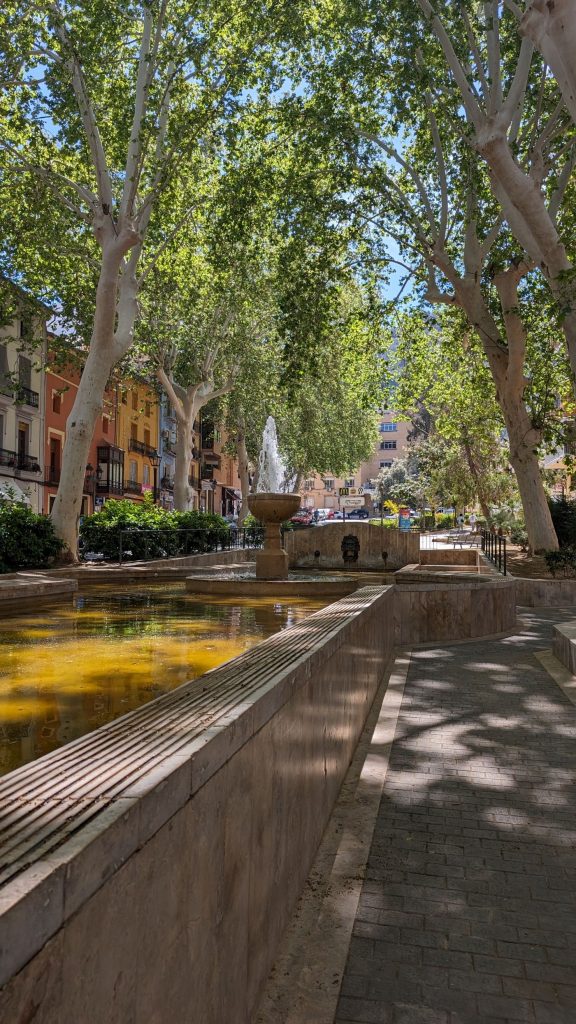
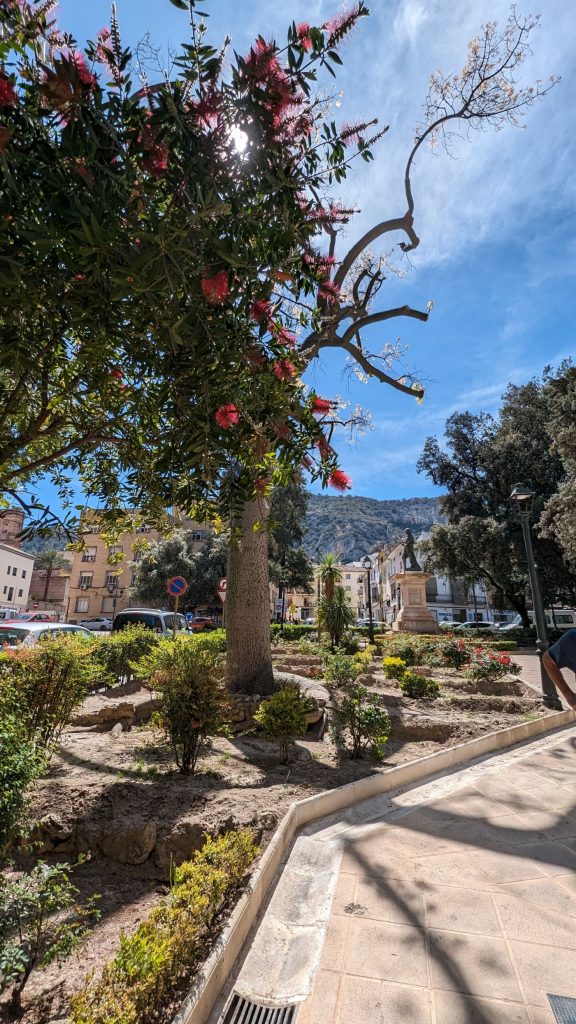
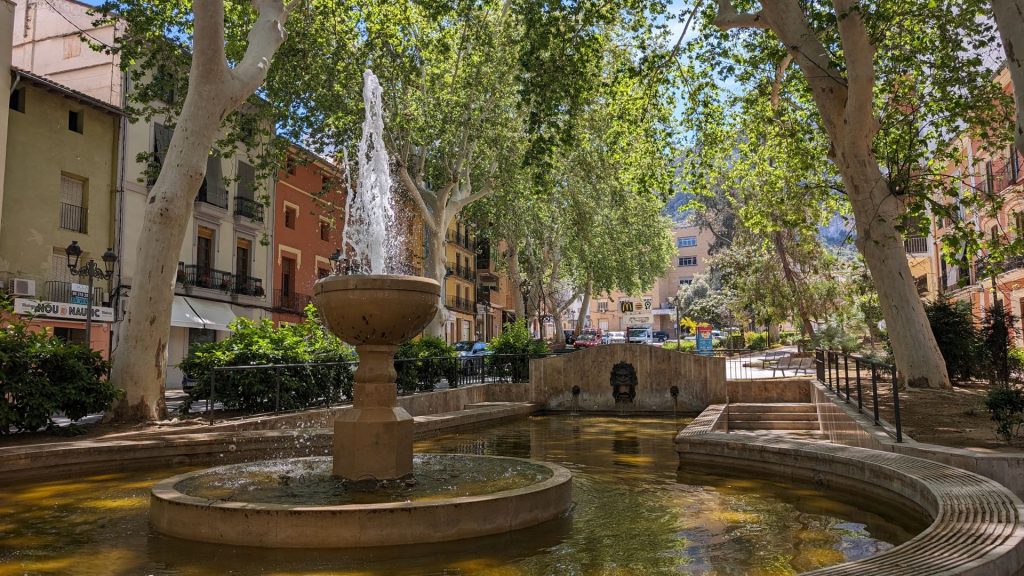
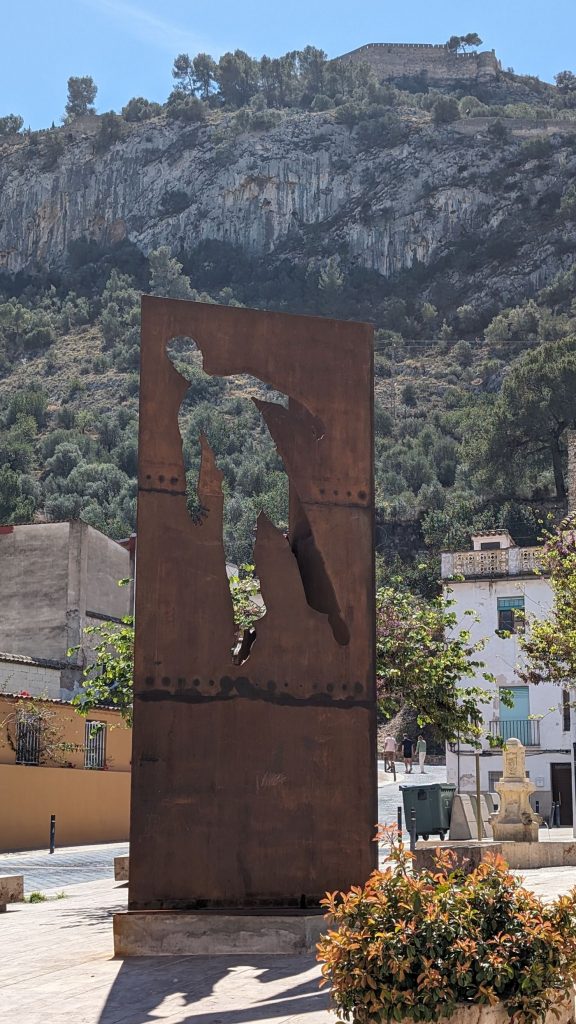
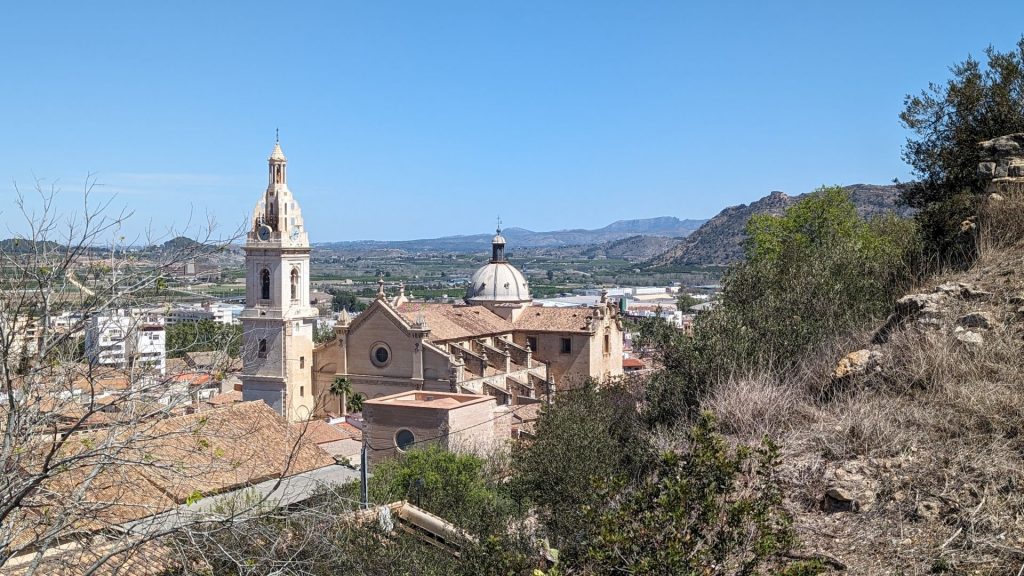
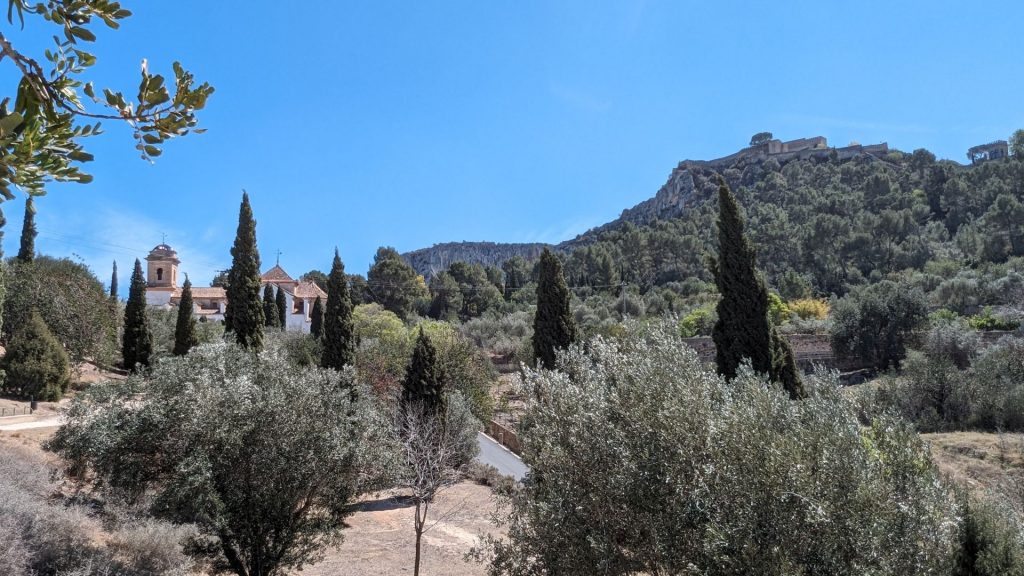
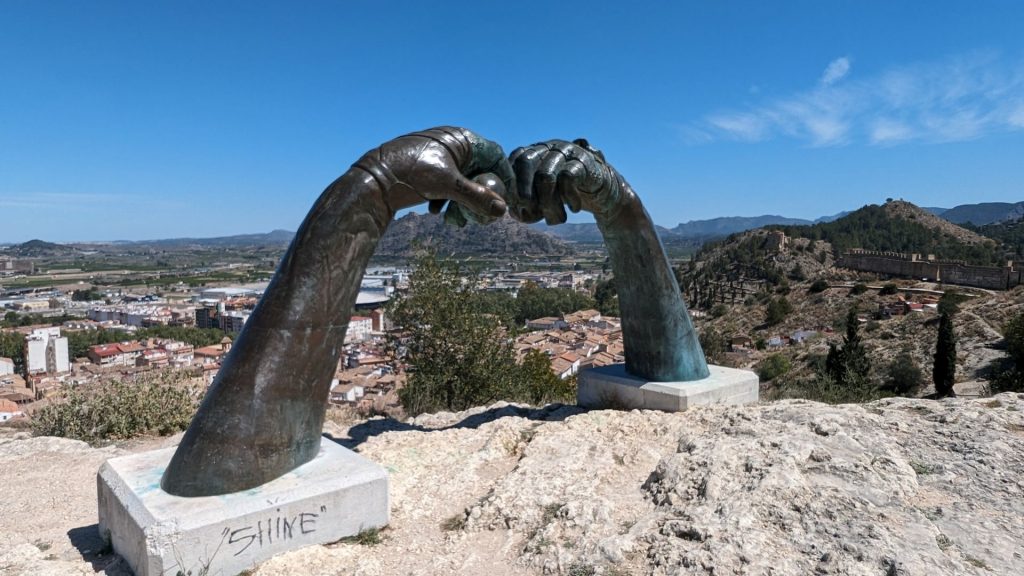
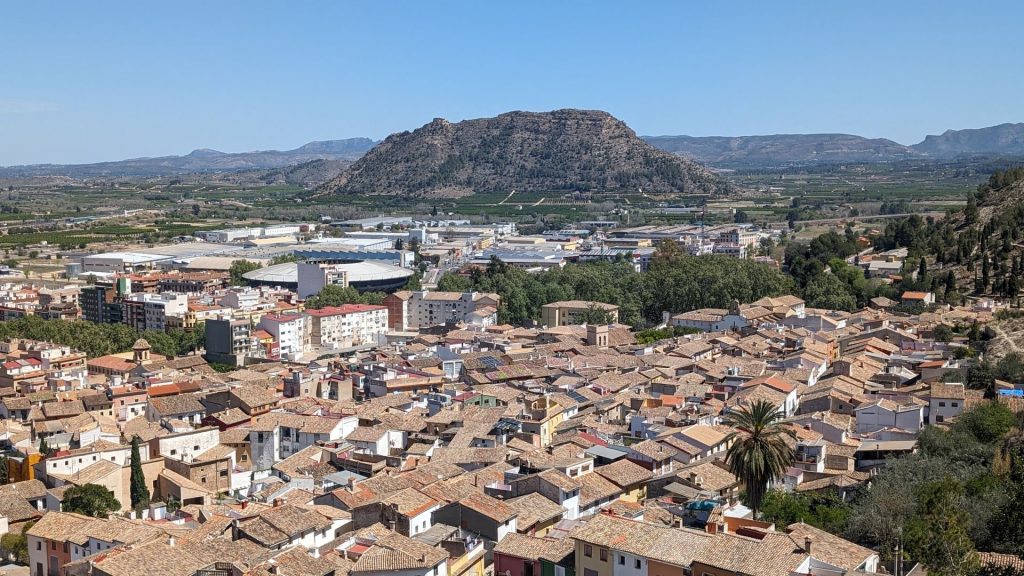
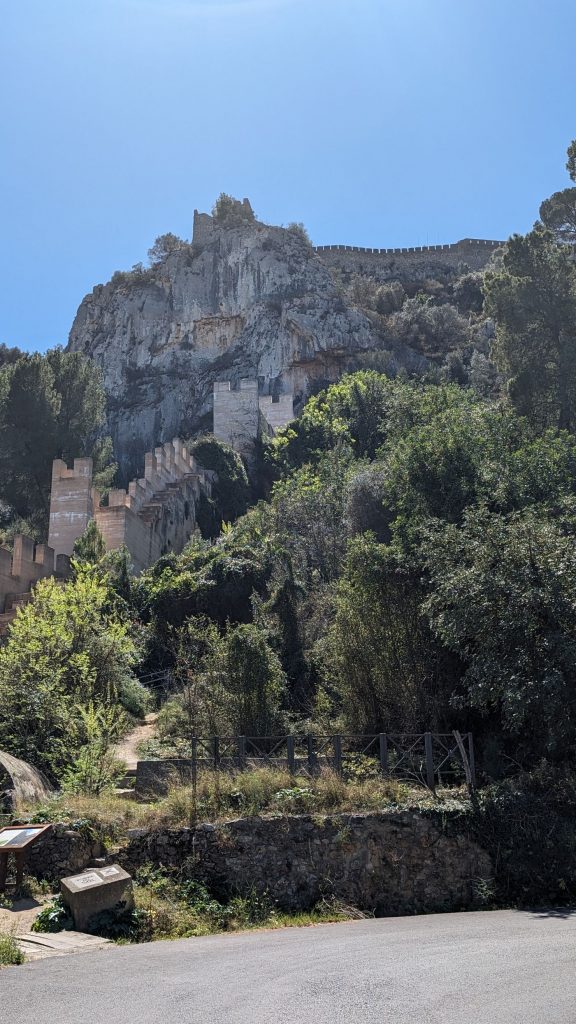
We reached the castle.
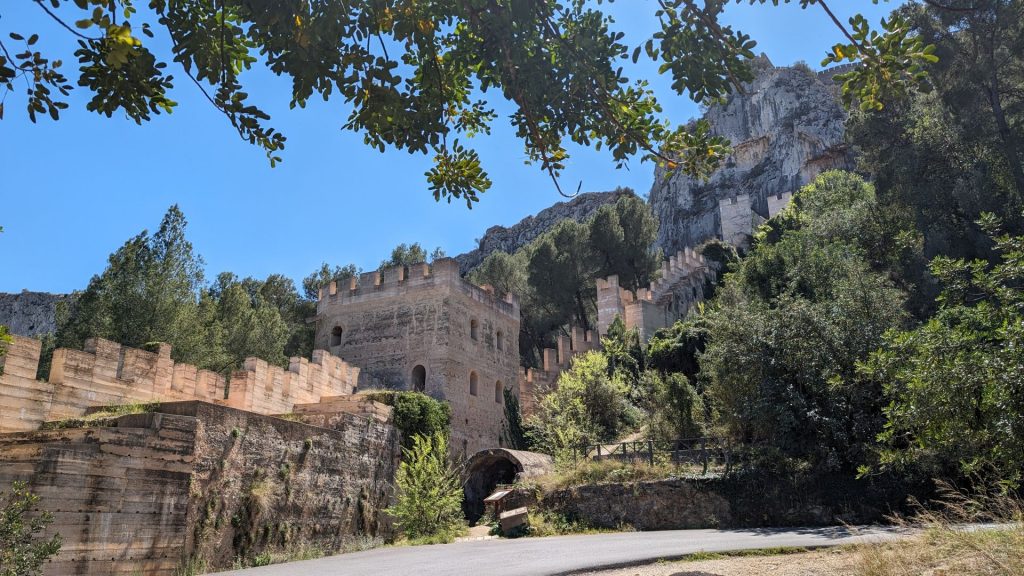
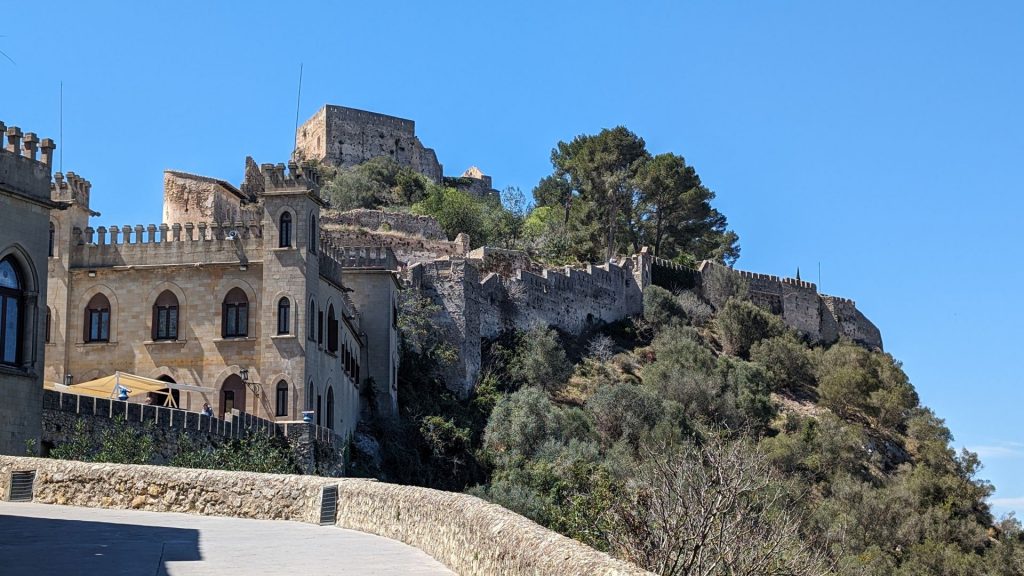
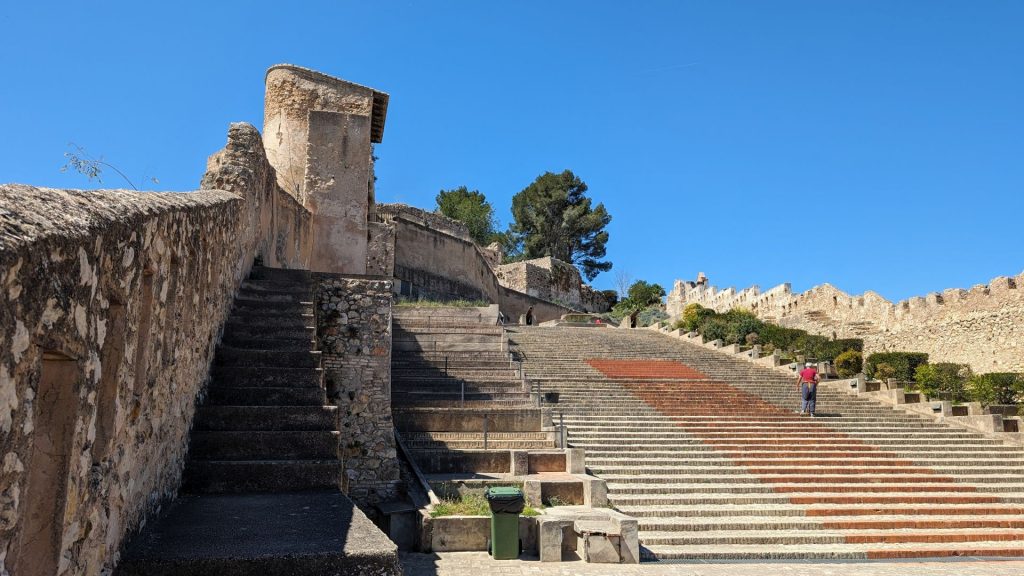
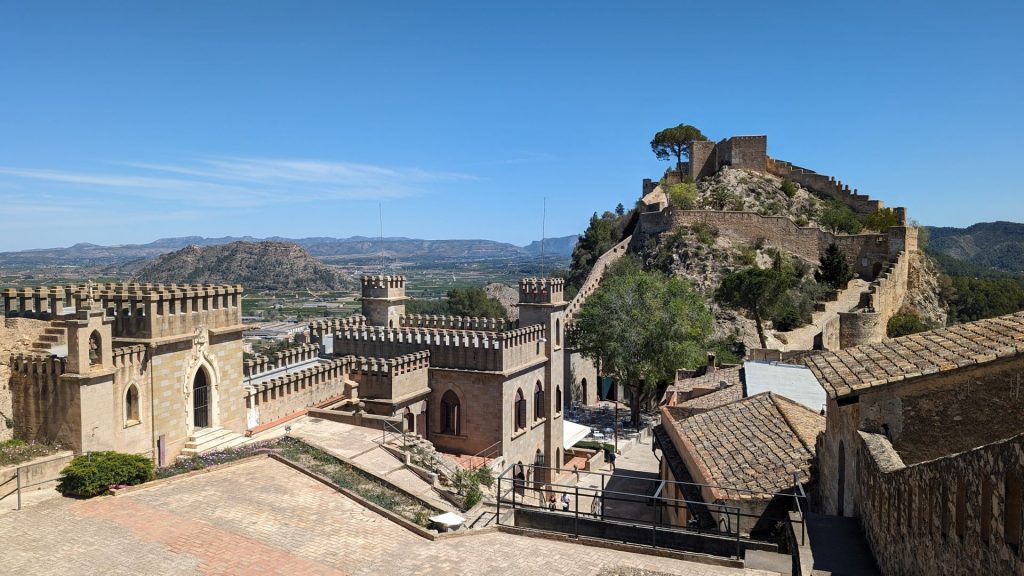
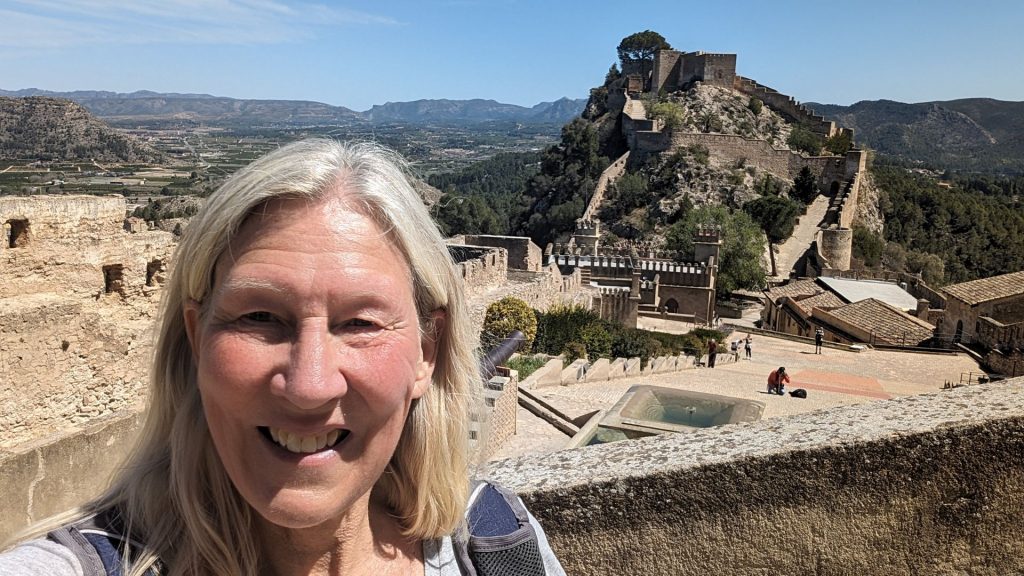
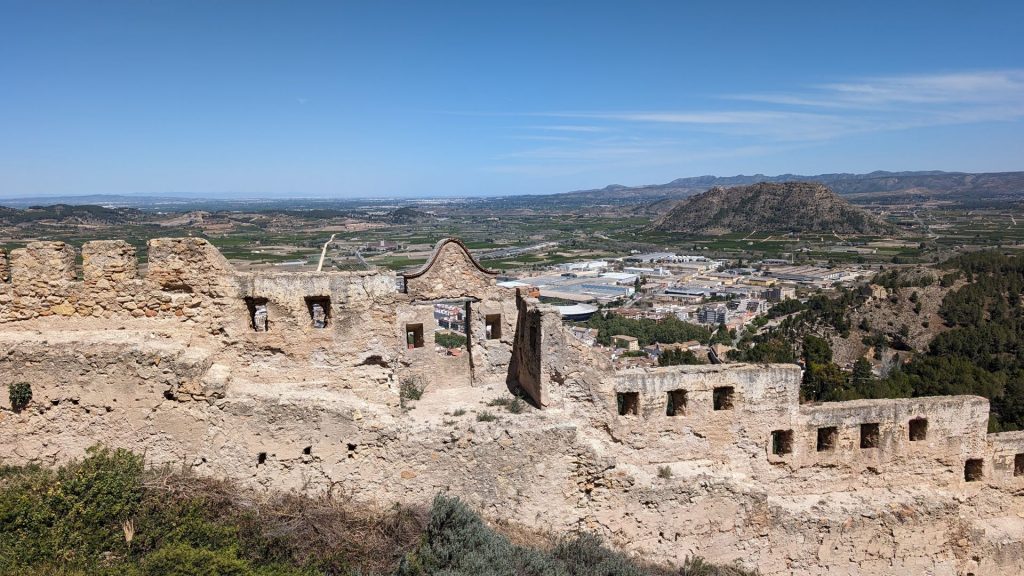
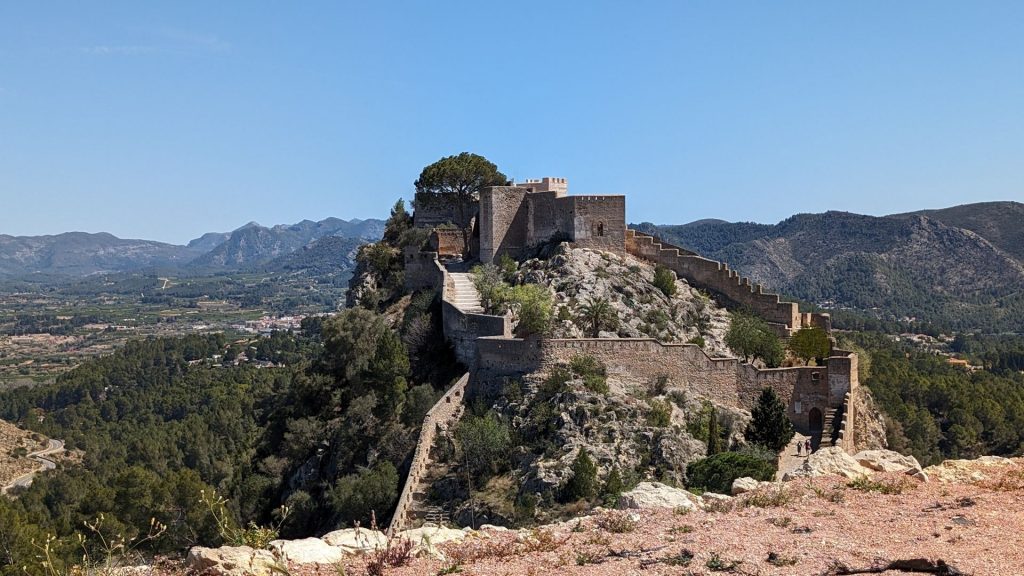
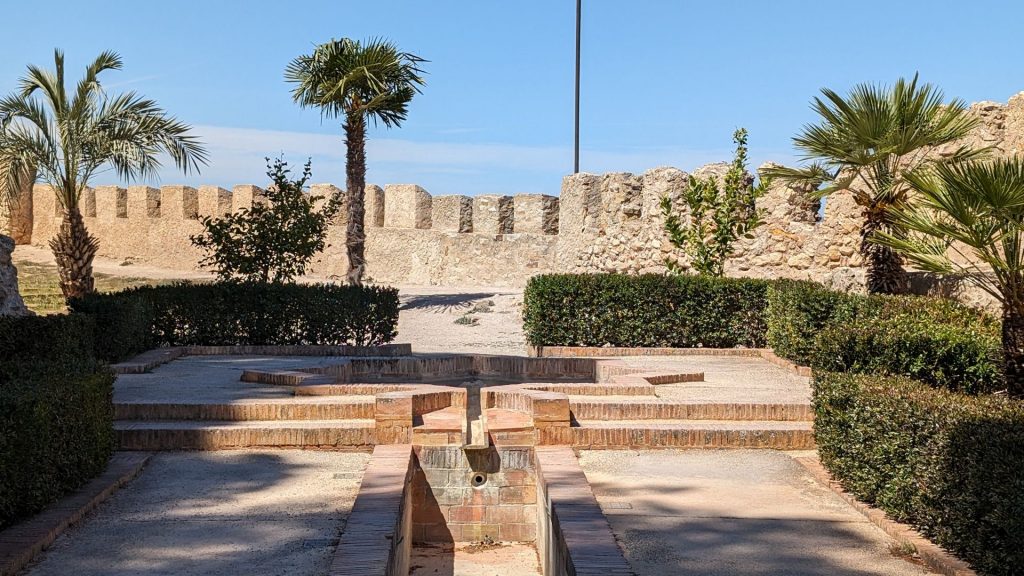
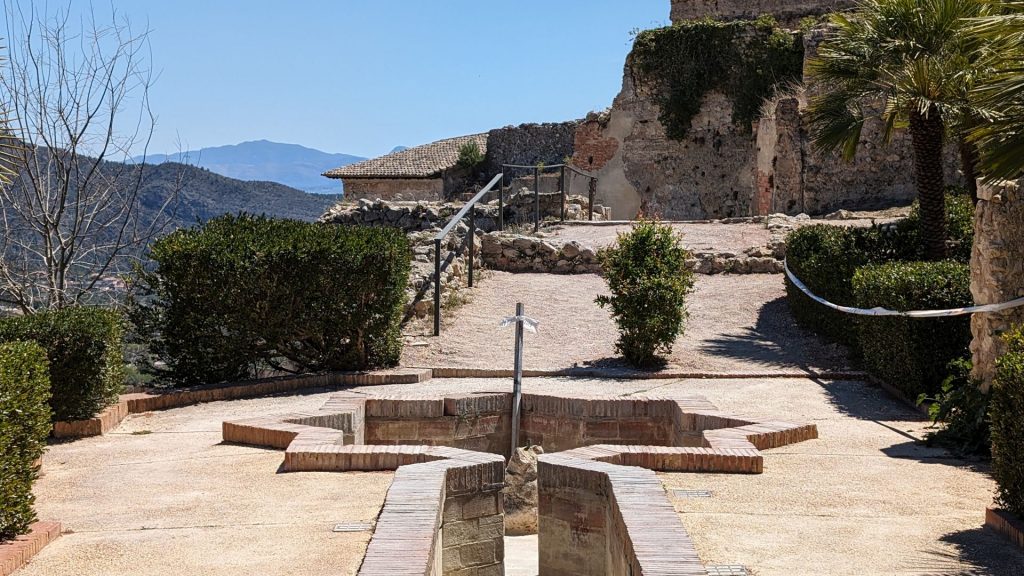
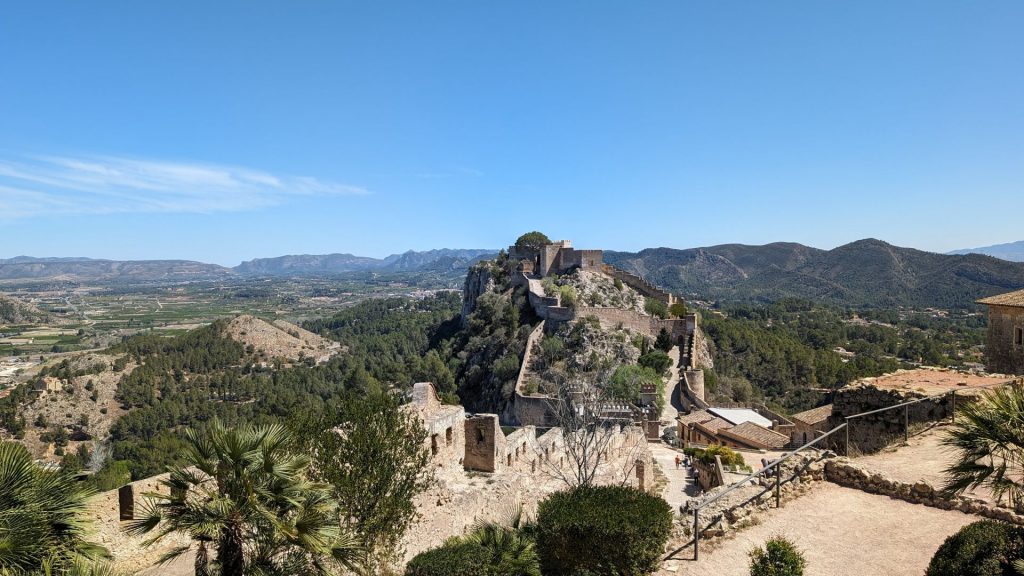
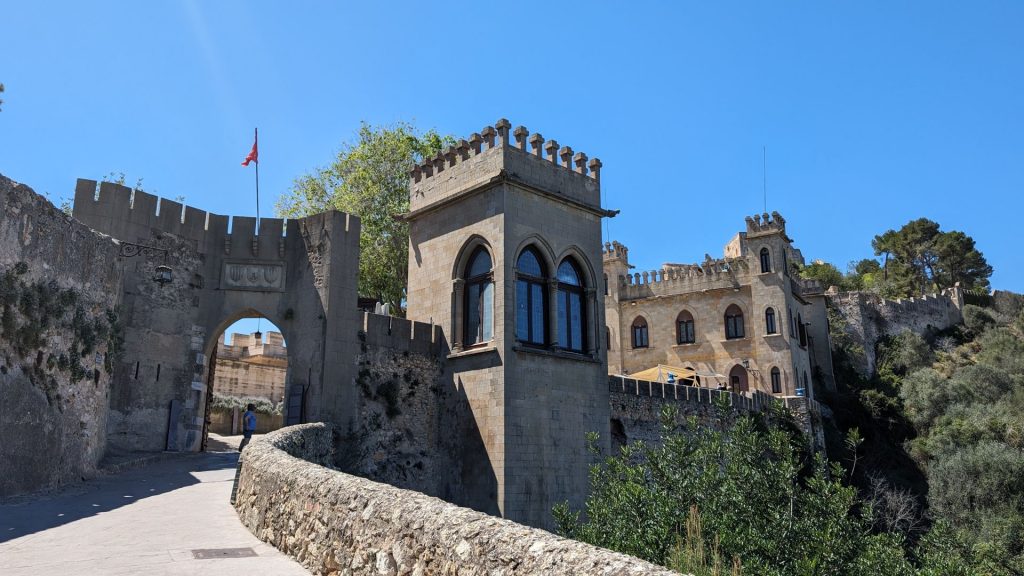
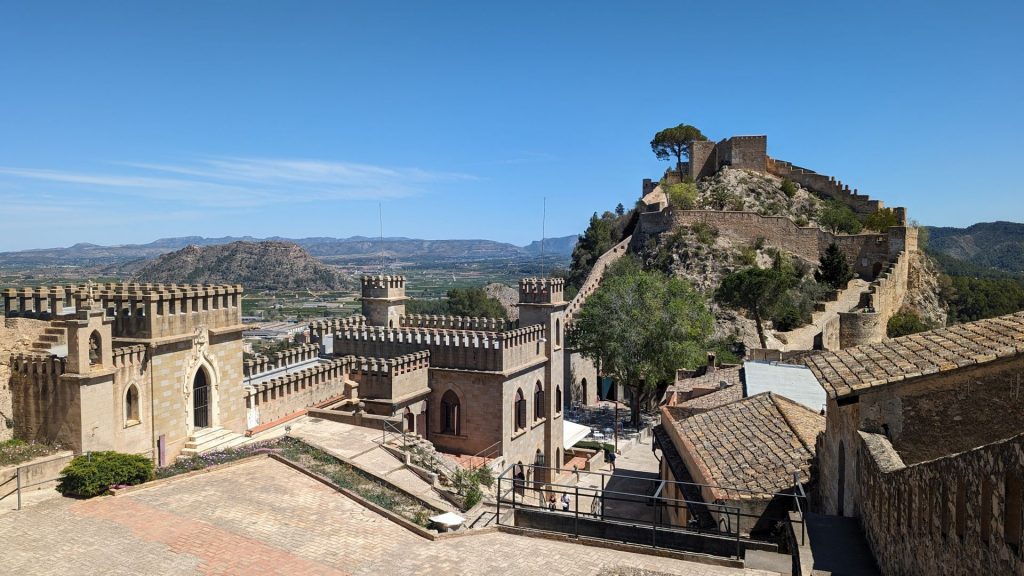
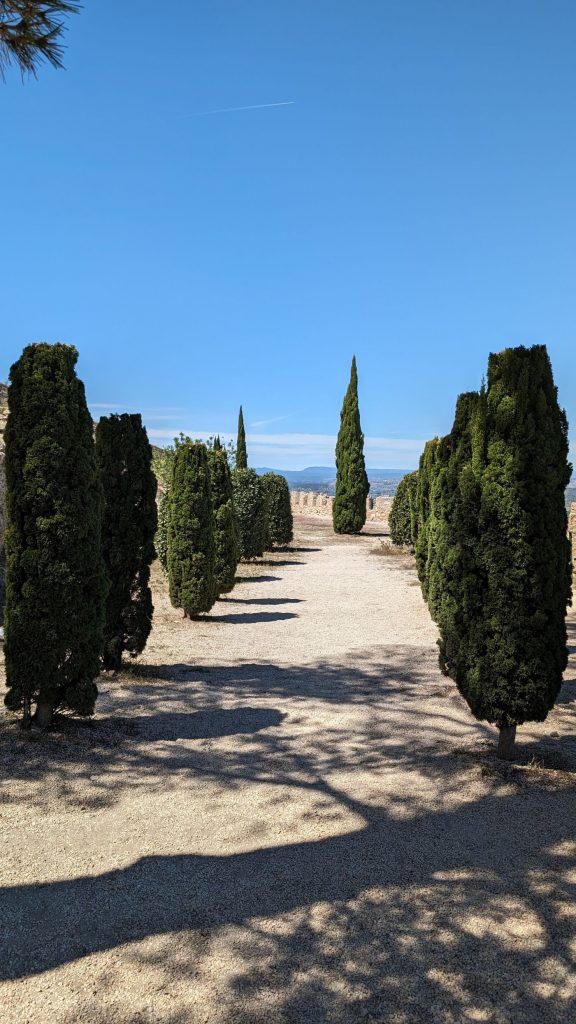
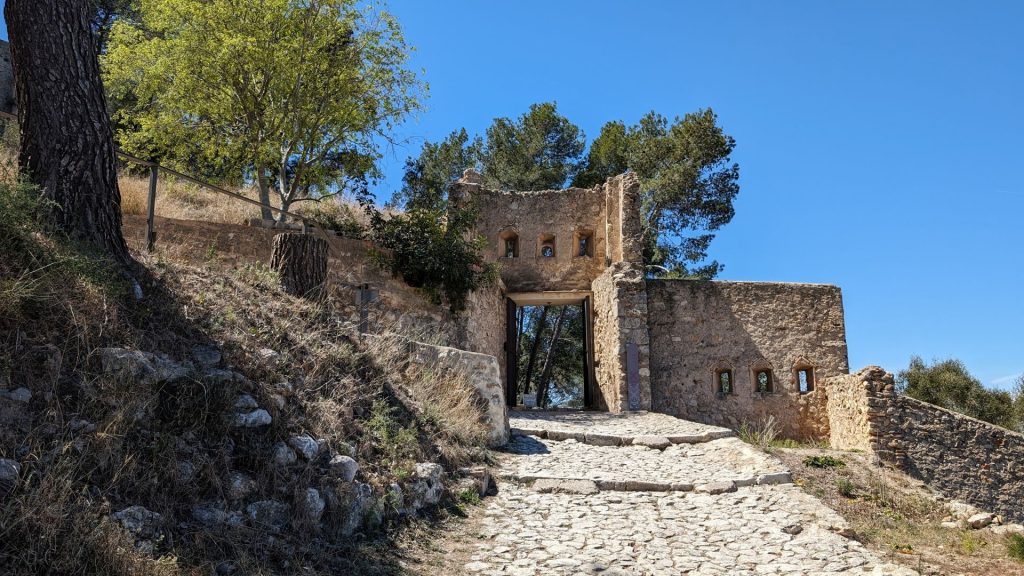
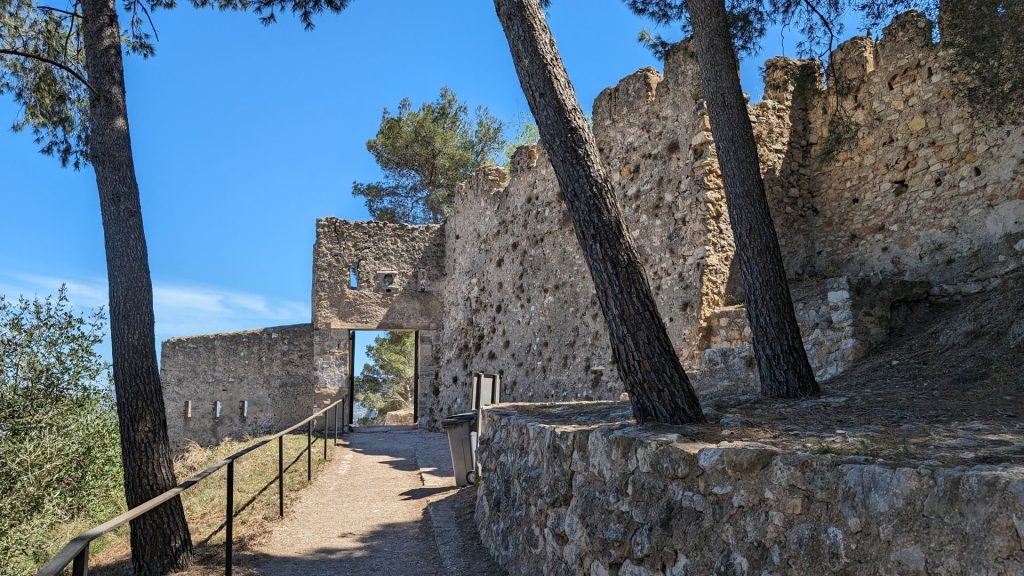
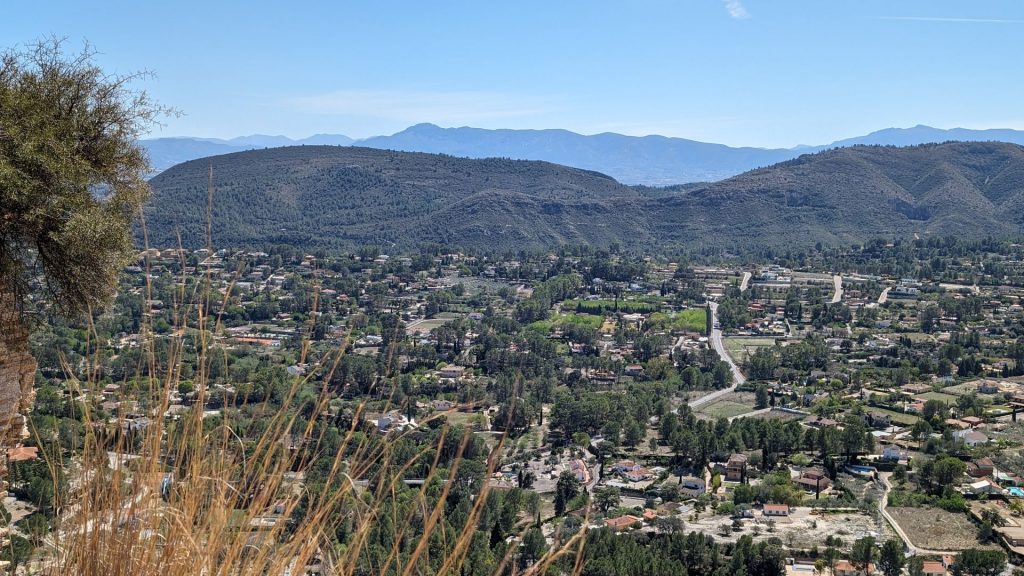
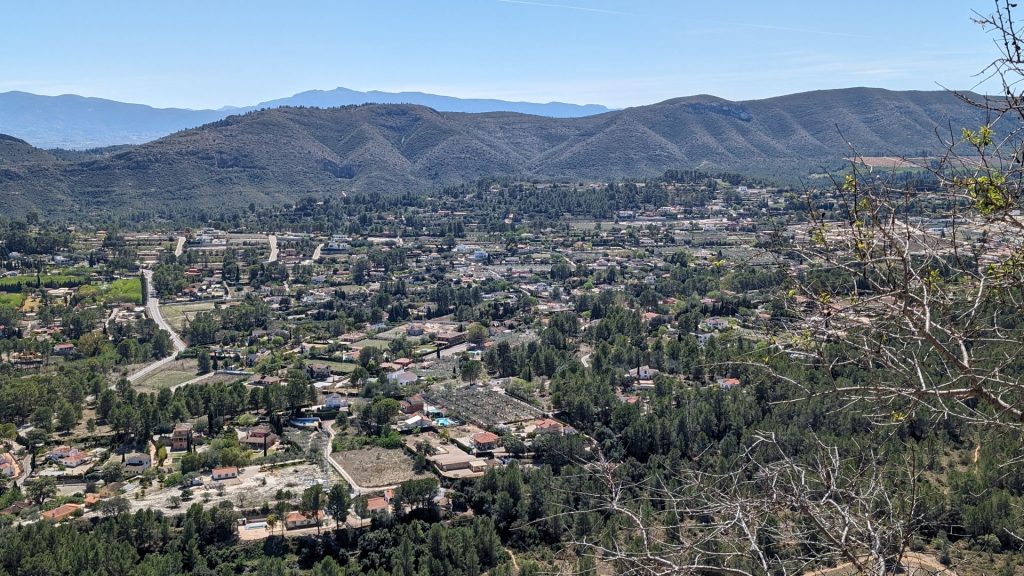
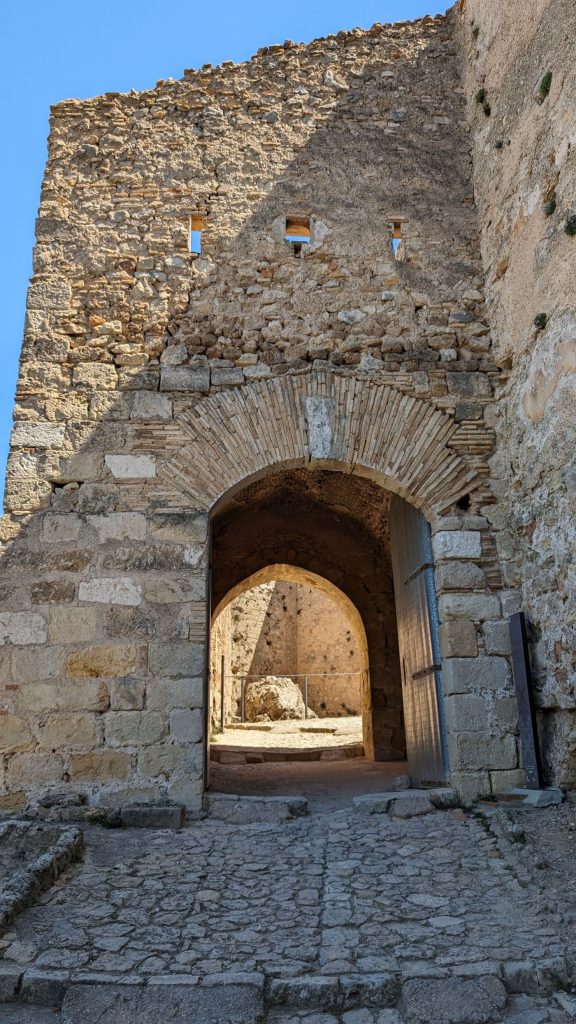
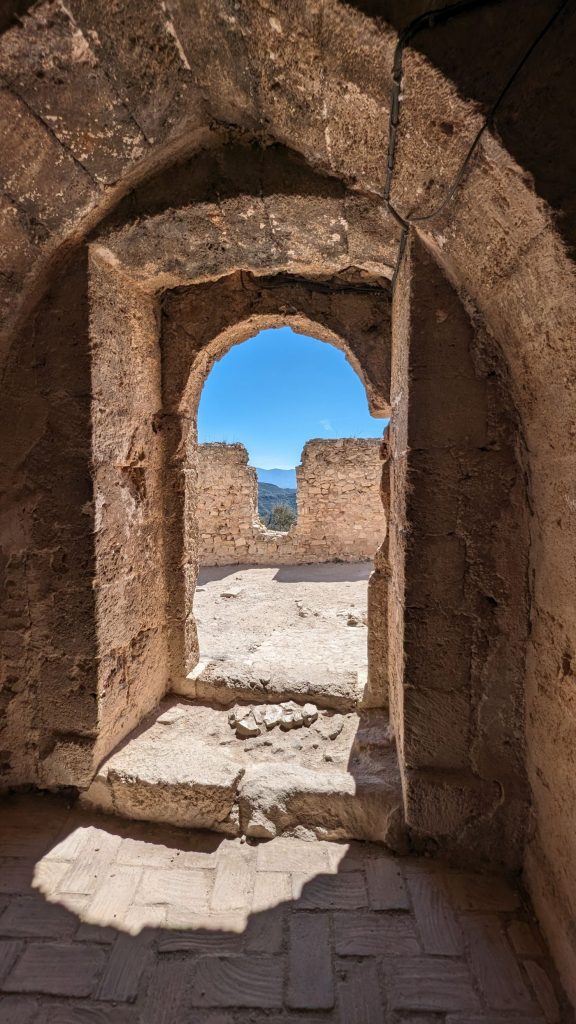
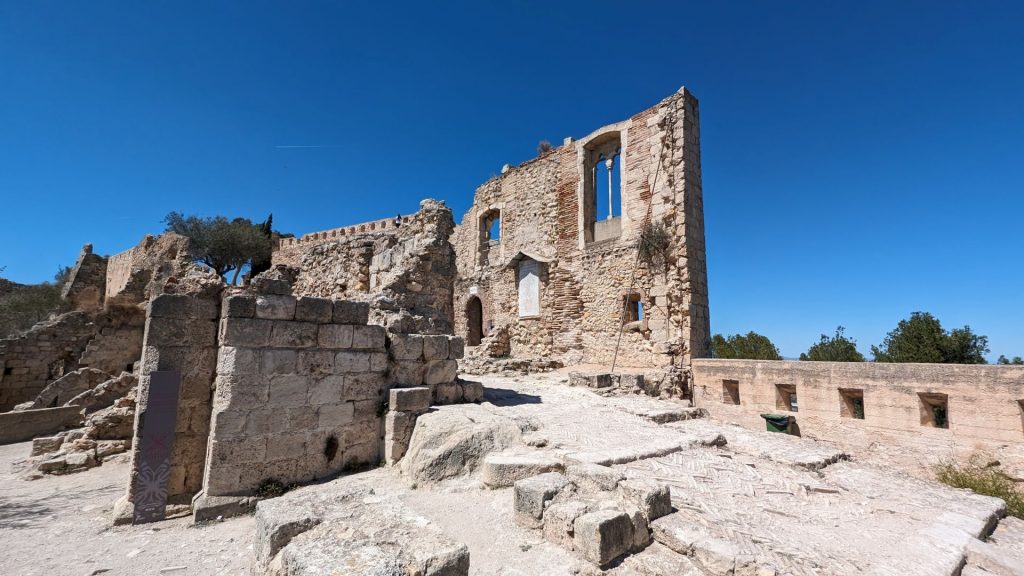
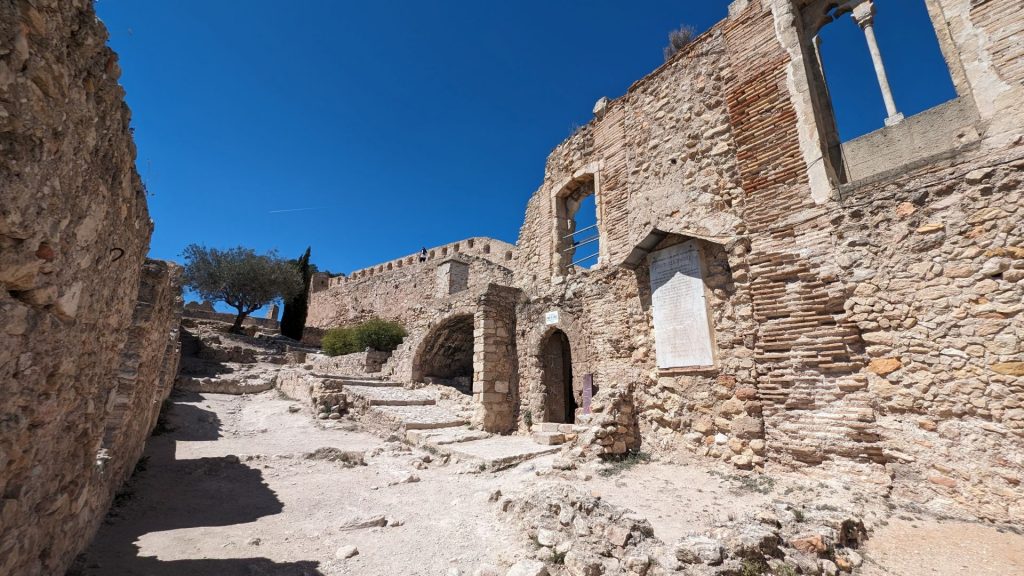
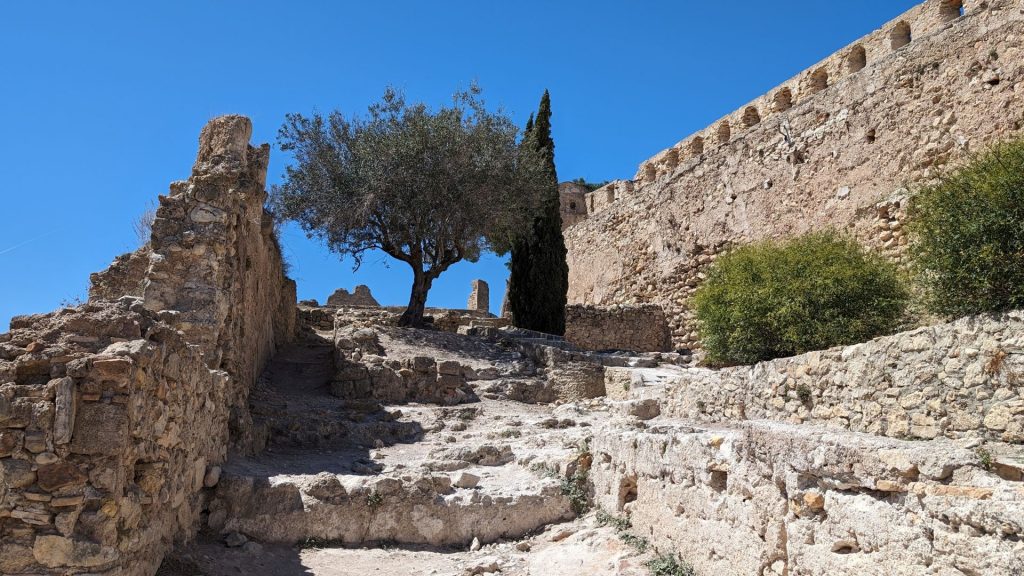
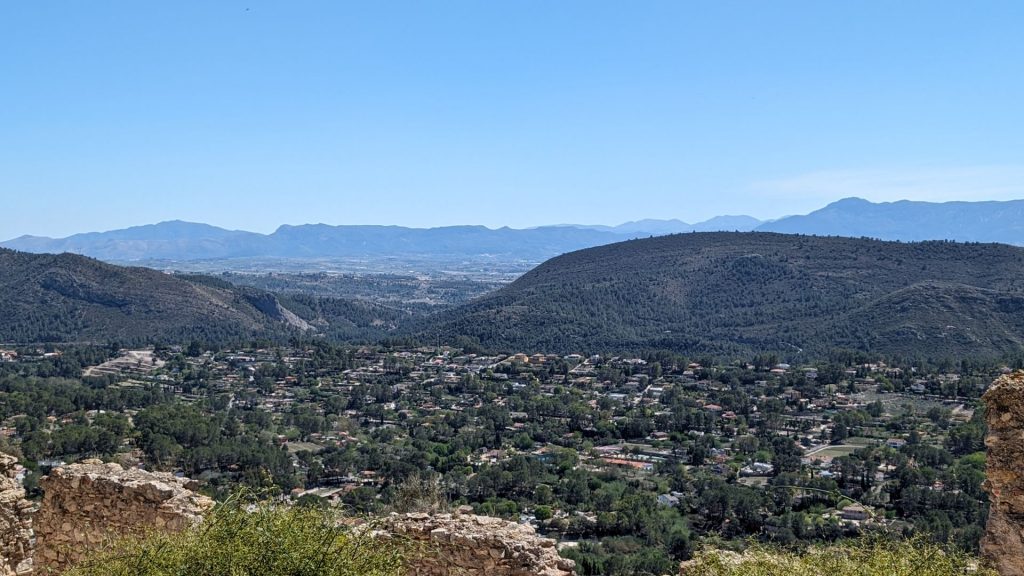
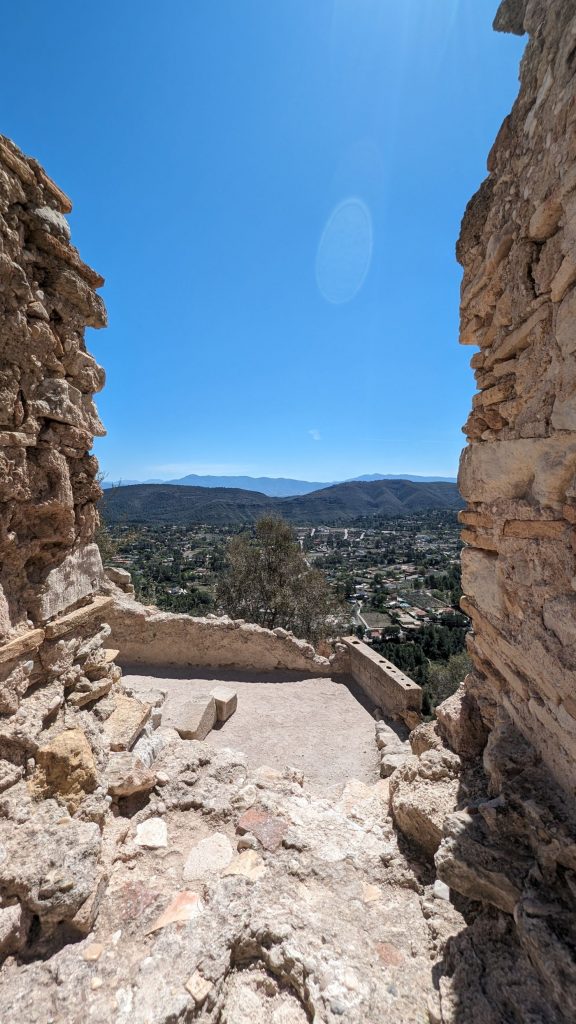
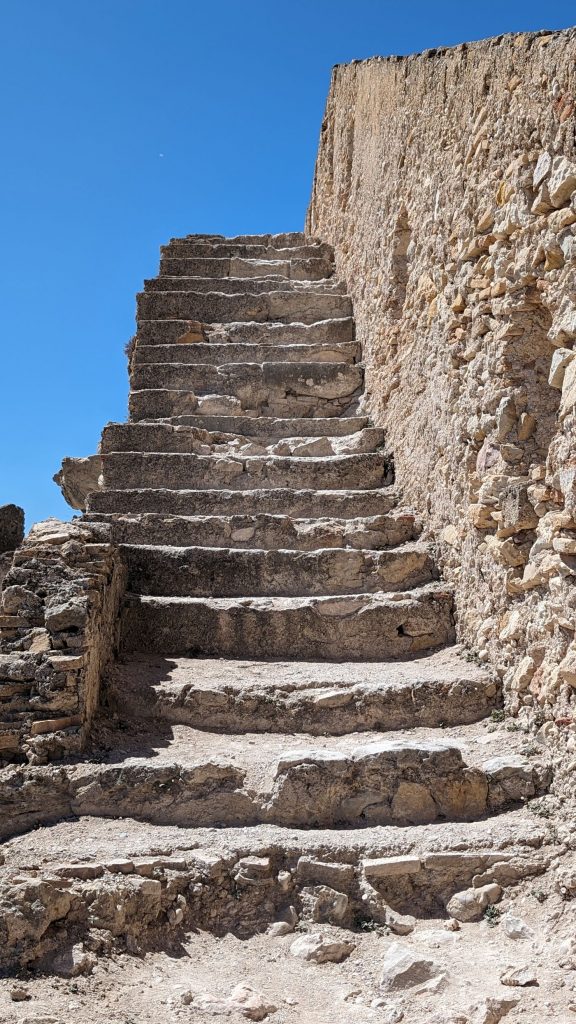
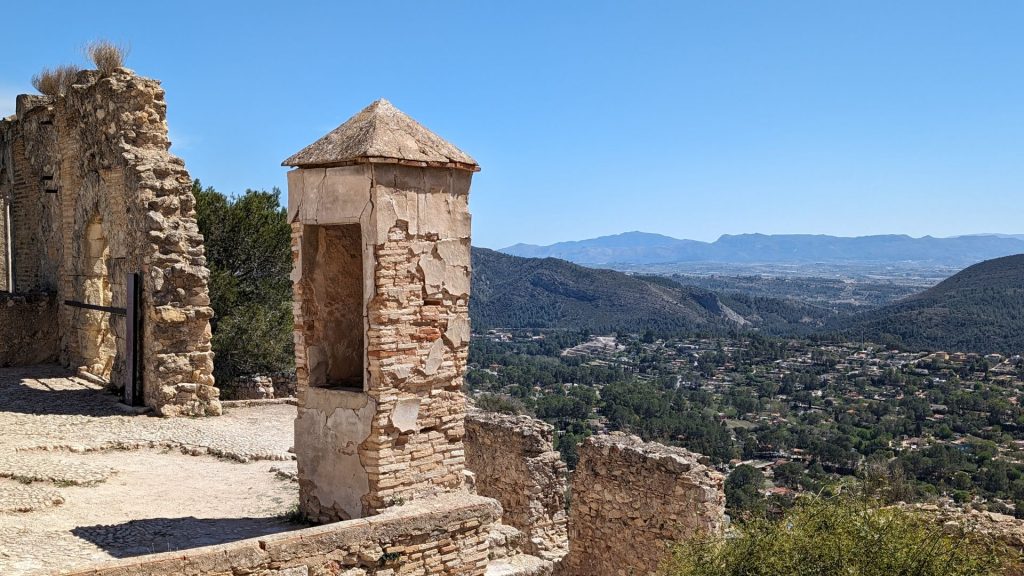
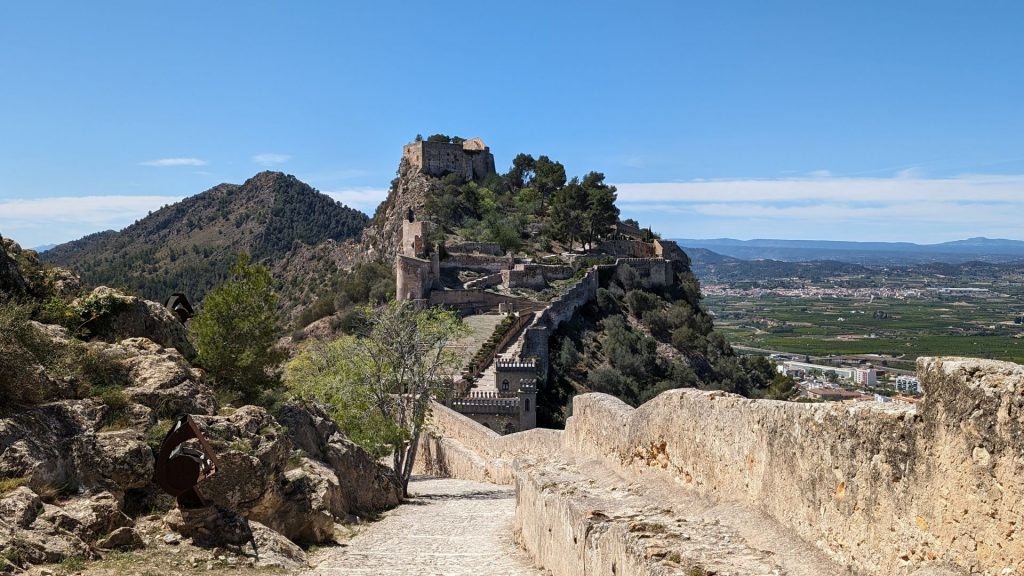
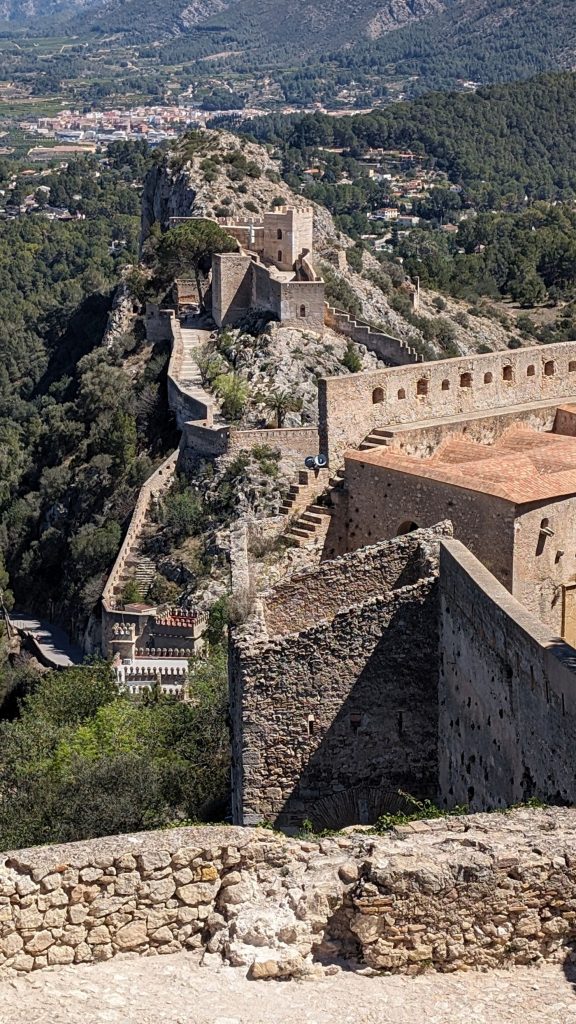
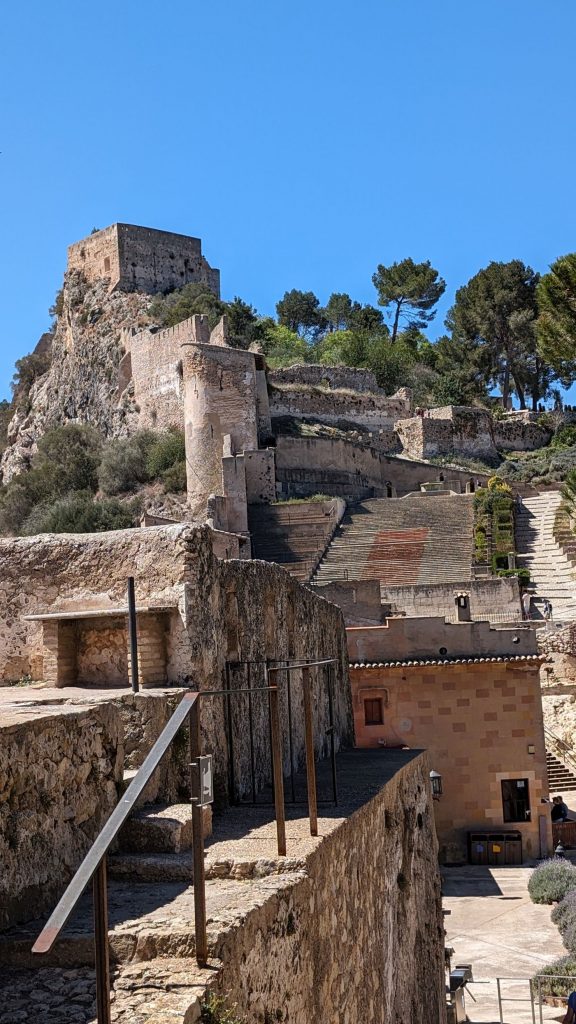
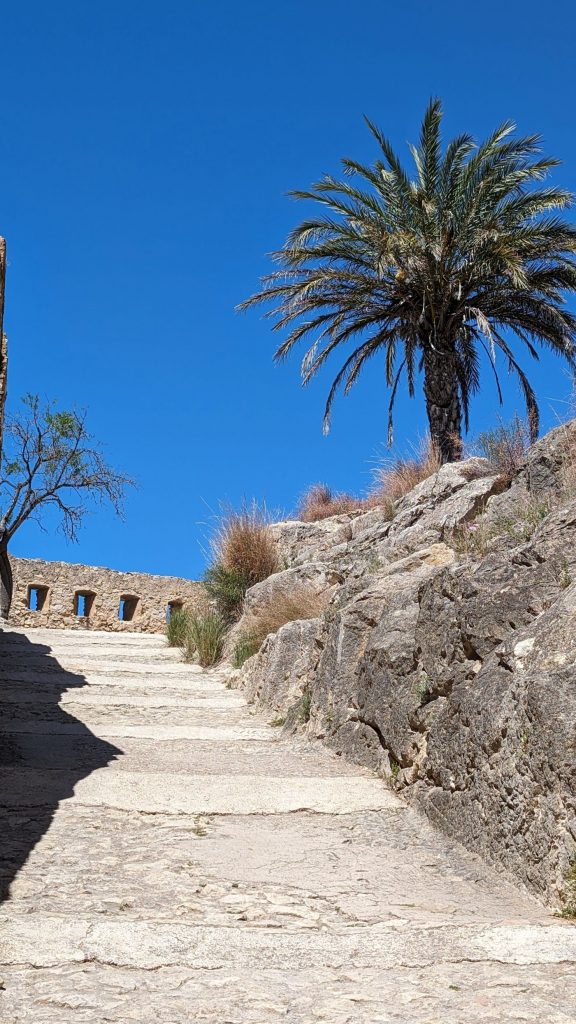
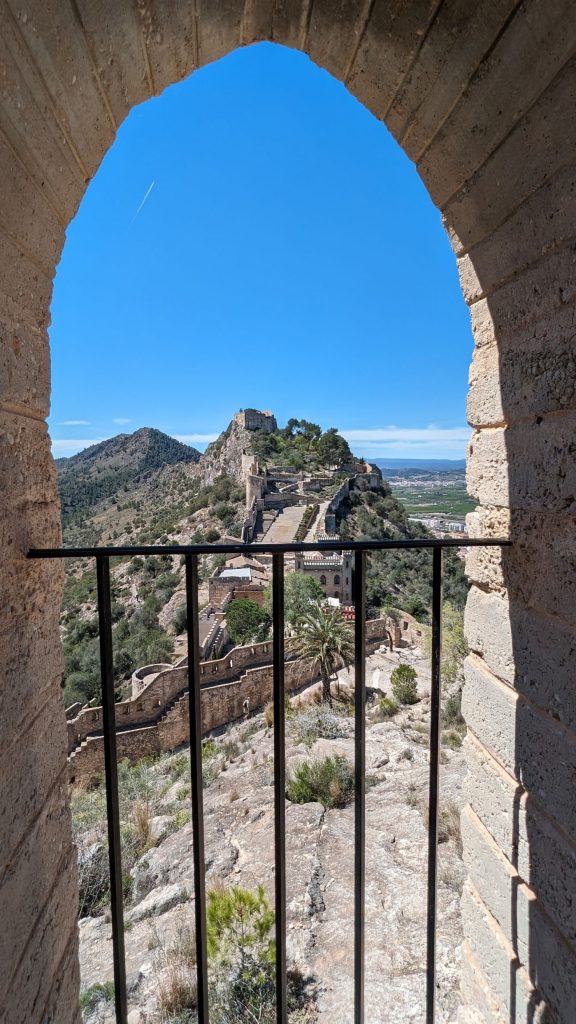
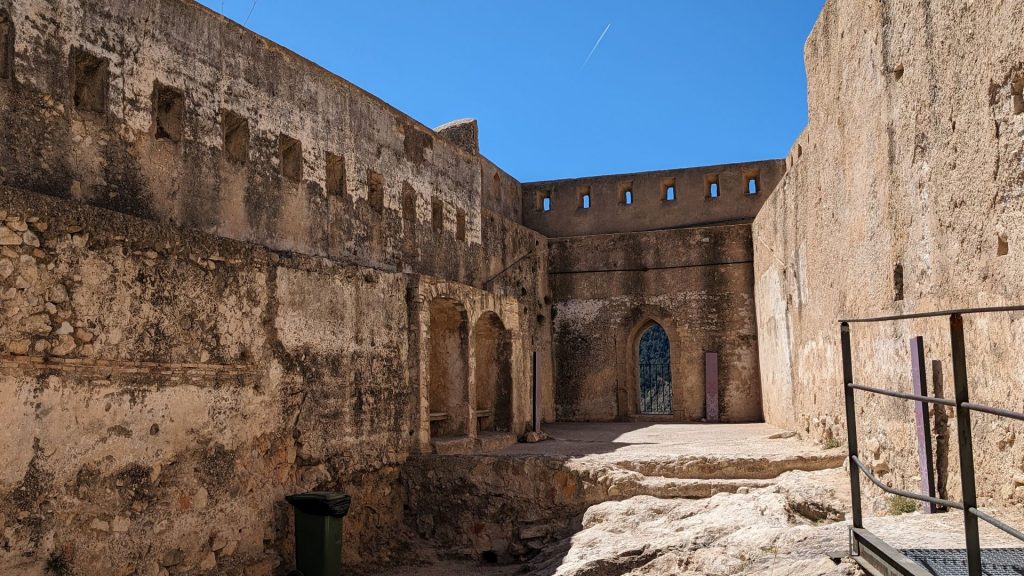
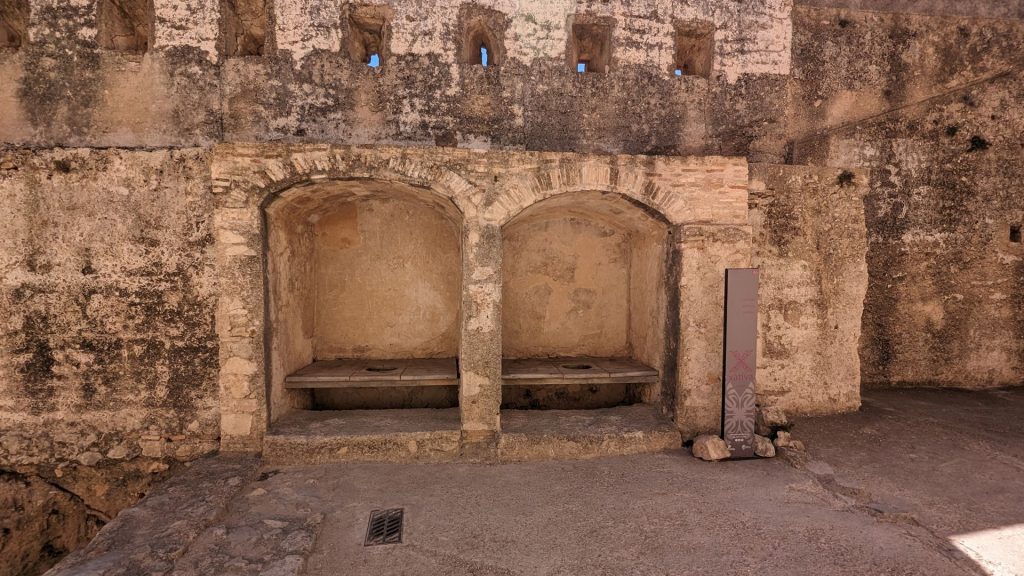
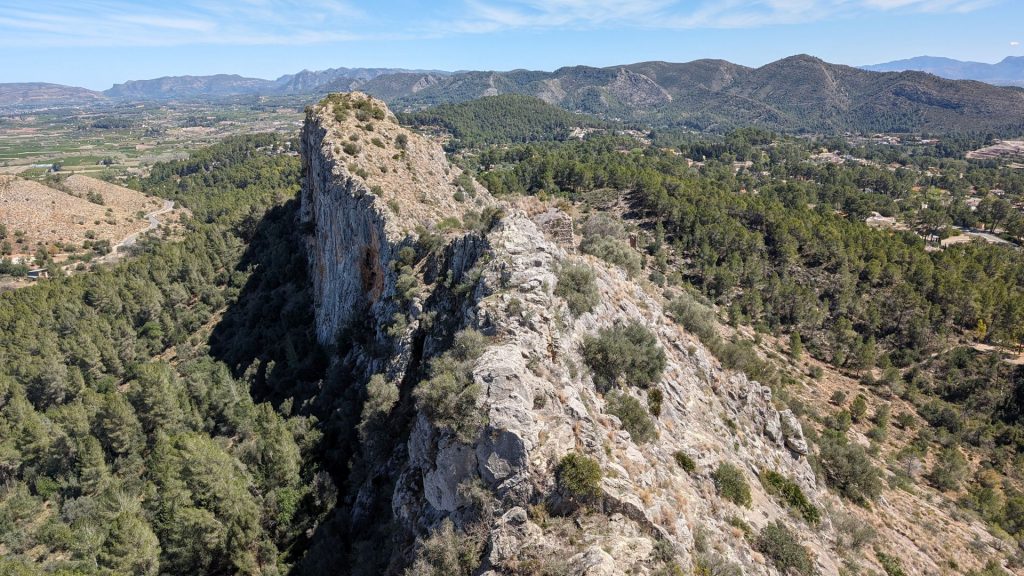
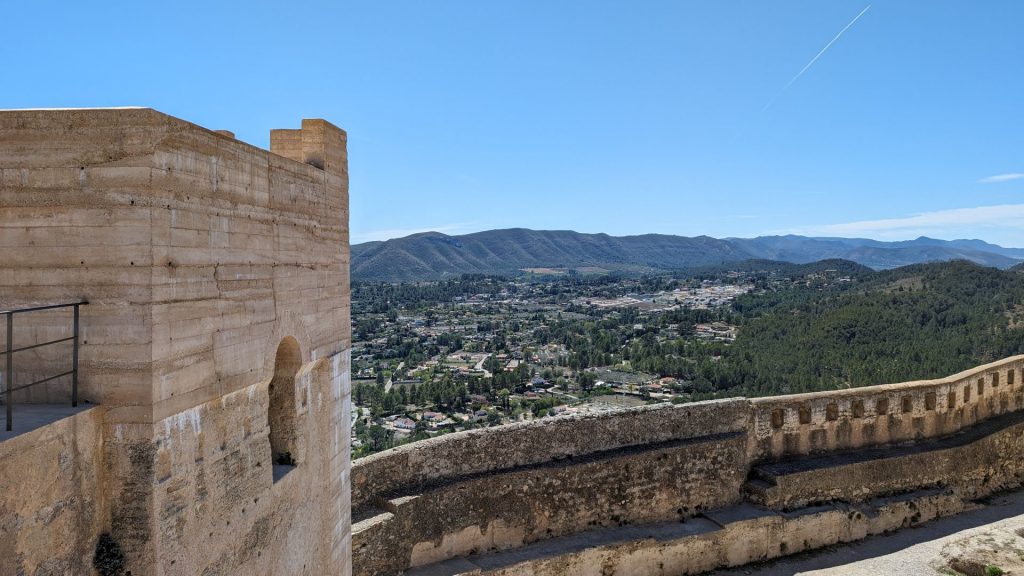
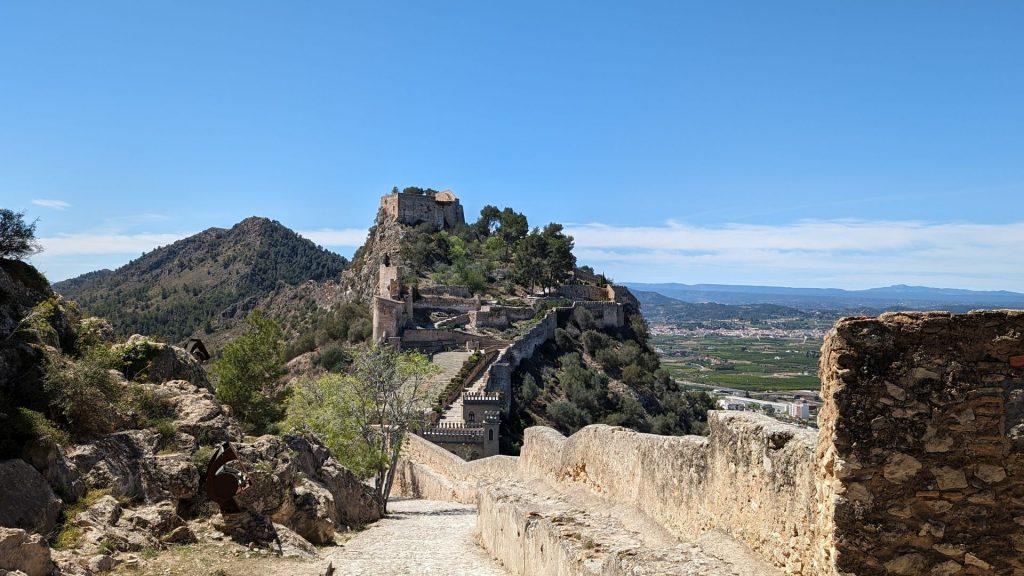
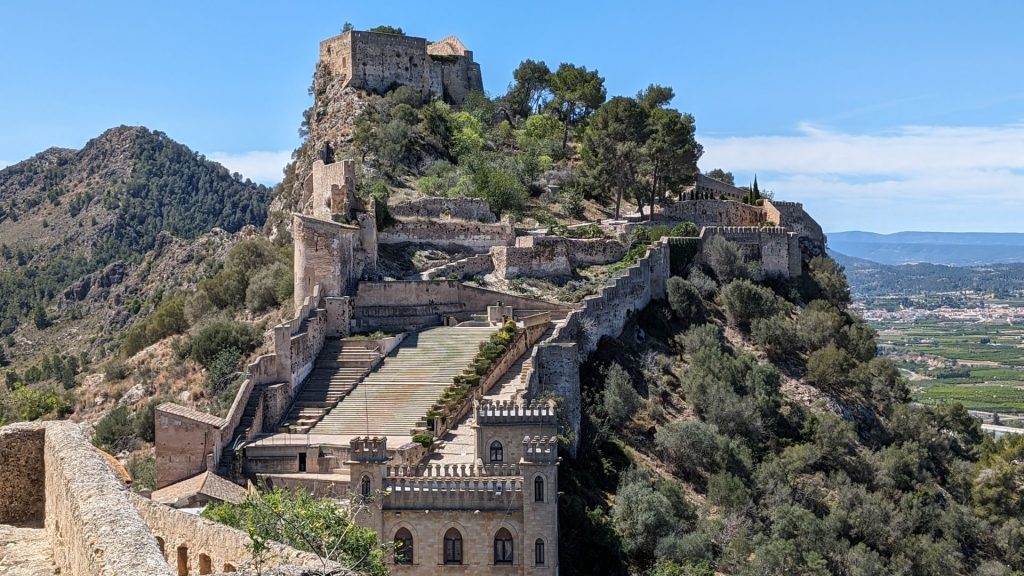
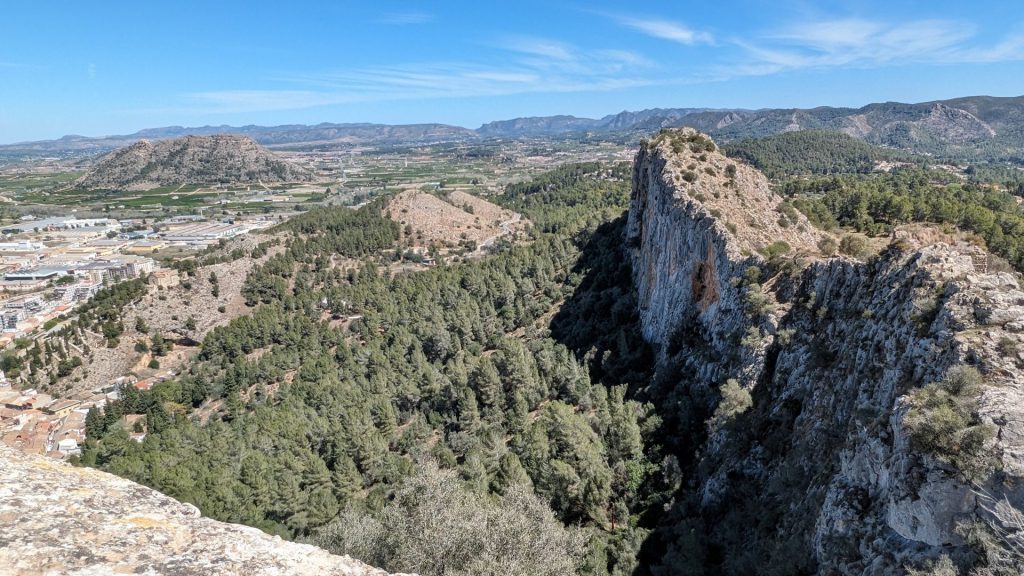
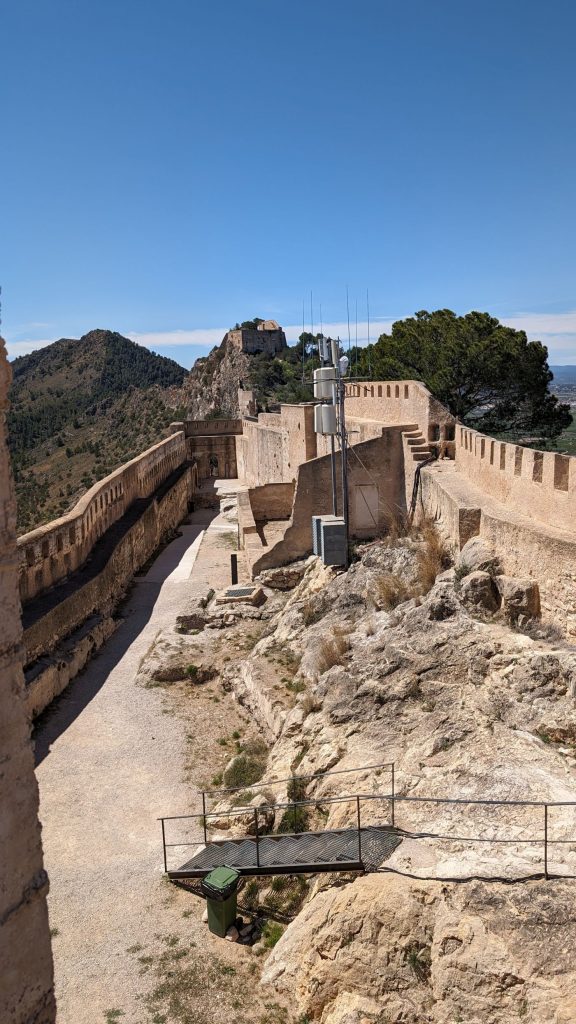
We walked back down from the castle. Michael went to the train station while I took a short walk around town to view some of the fountains.
First, a few pictures of the town. It is quite colorful!
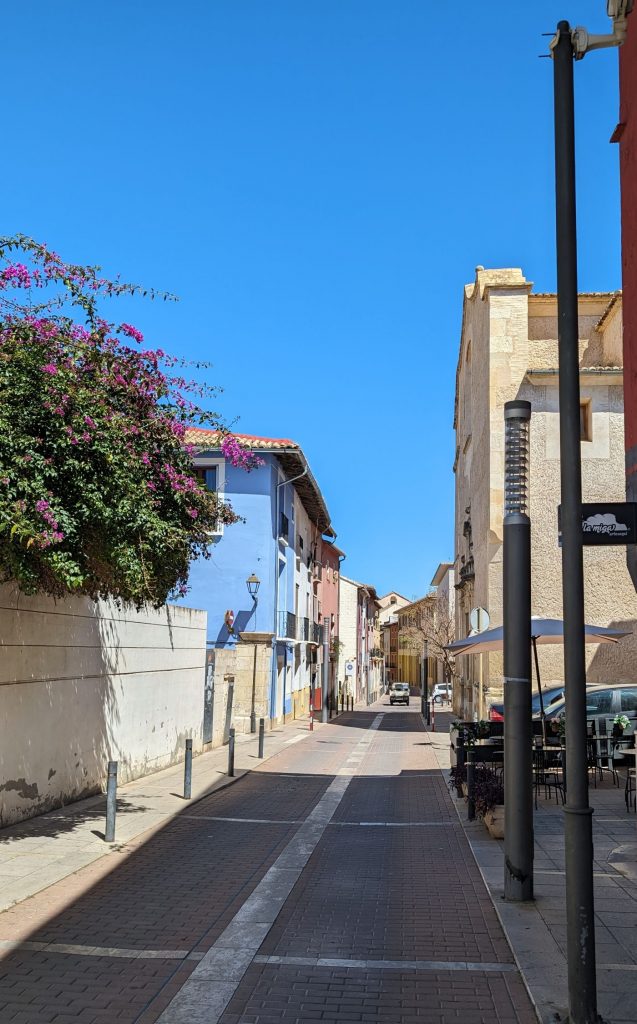
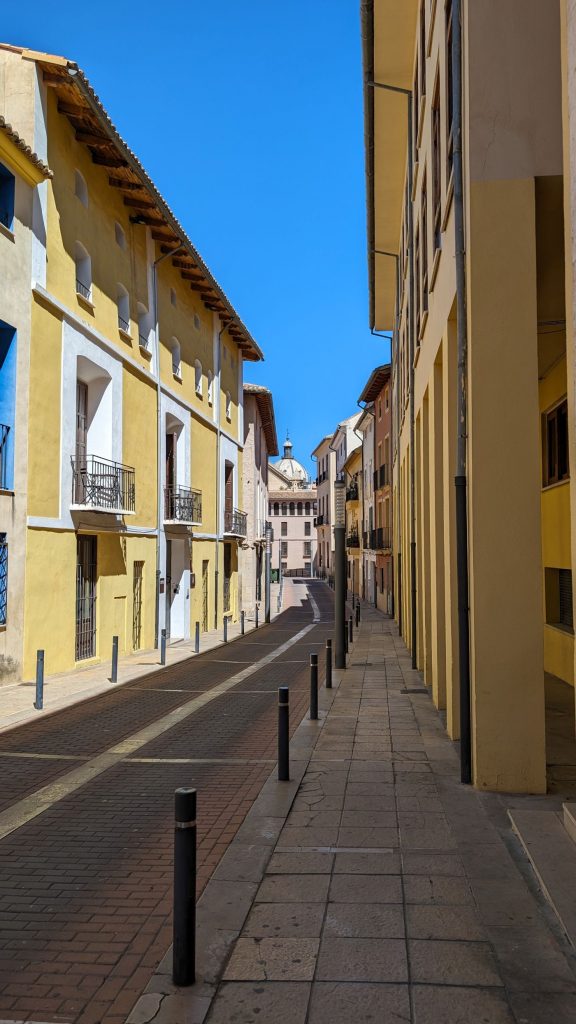
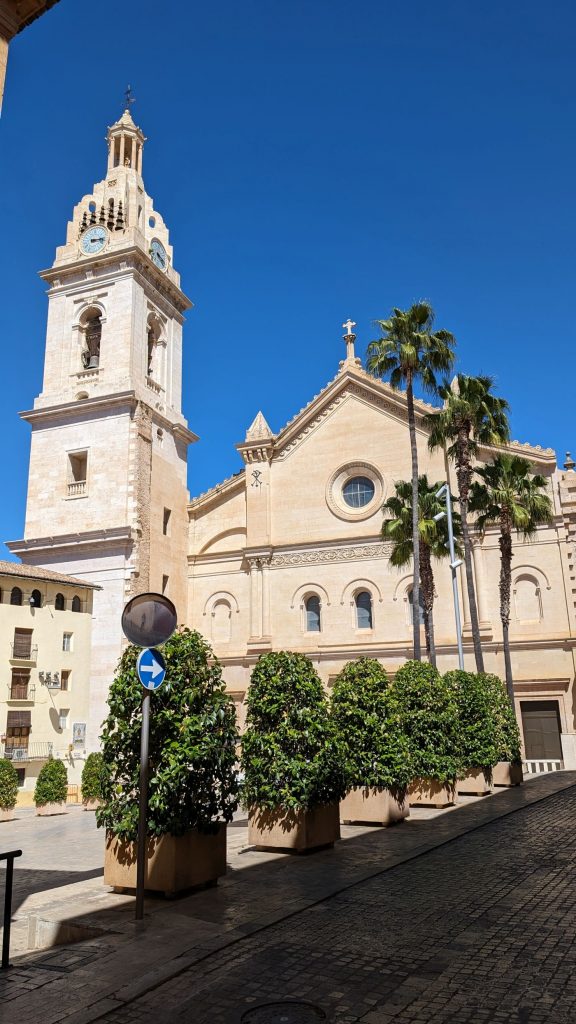
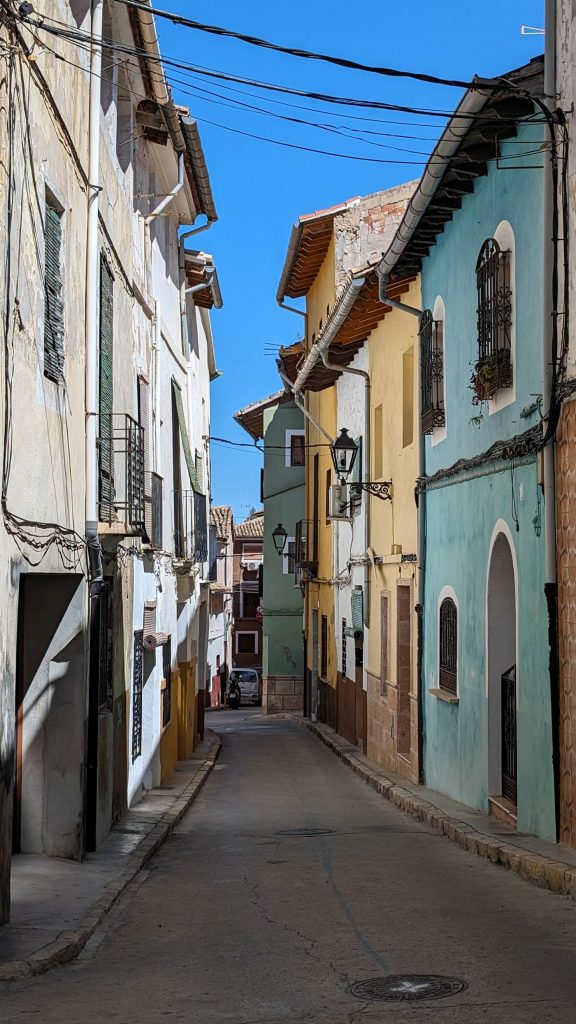
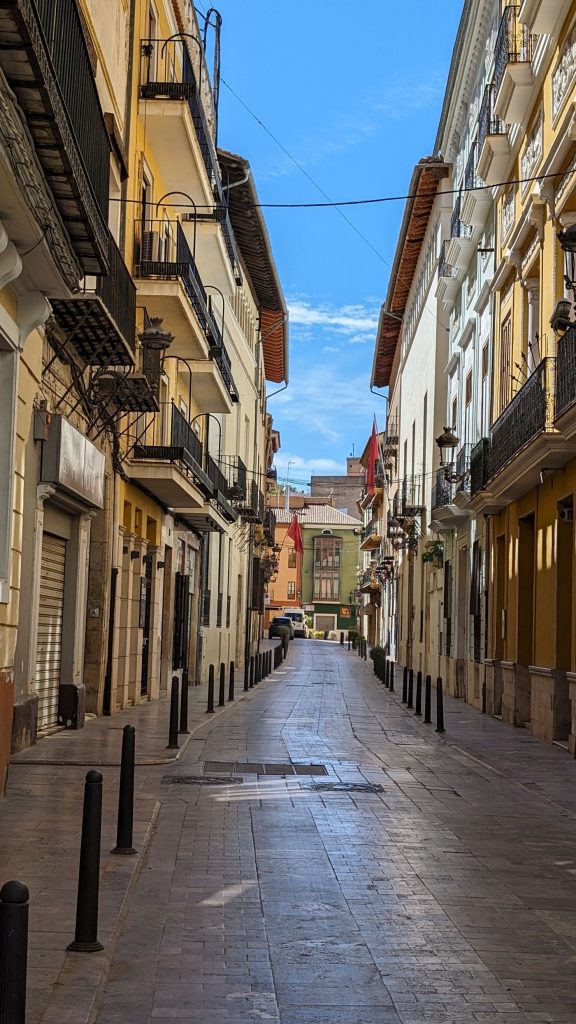
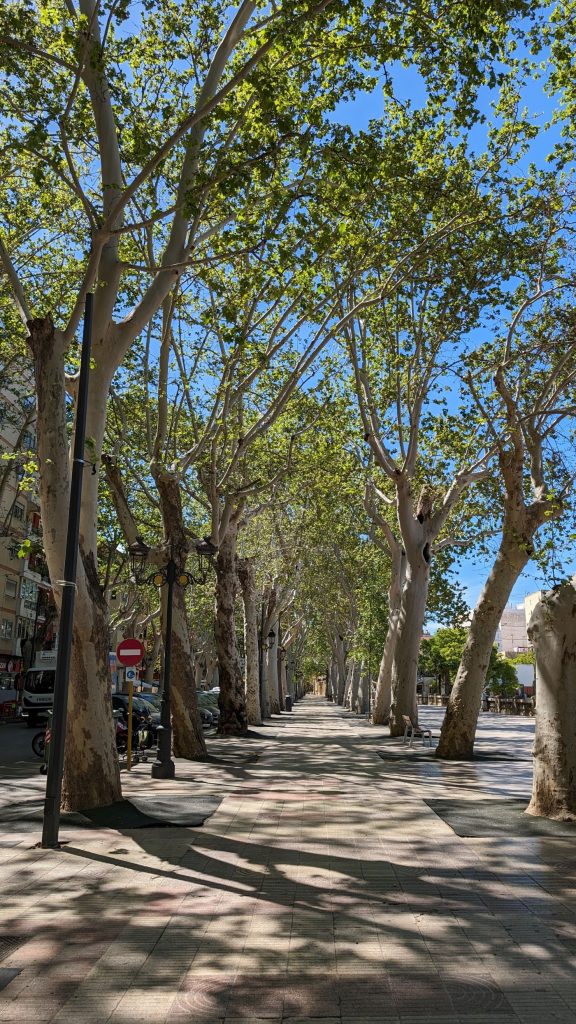
Back to the fountains.
Xàtiva is sometimes called “The City of a Thousand fountains.” It has boasted a network of drinking water supply channels since at least the Islamic period. By the 17th century, there were more than nine hundred fountains, a feature so unusual at the time that the city became famous for it. Fountains were divided into three categories; royal ones, which were monumental and publicly funded, neighborhood ones, maintained by the residents, and private ones, scarce and only within the reach of the very wealthiest families.
There is actually a “Water Route” bikers and walkers can take. I don’t know how many fountains there really are, but I saw several that I liked. I find fountains to be quite cheerful. Each one was different, but they have one important thing in common: the water in each is potable. I drank from most of them and I saw a couple of bikers filling their water bottles.
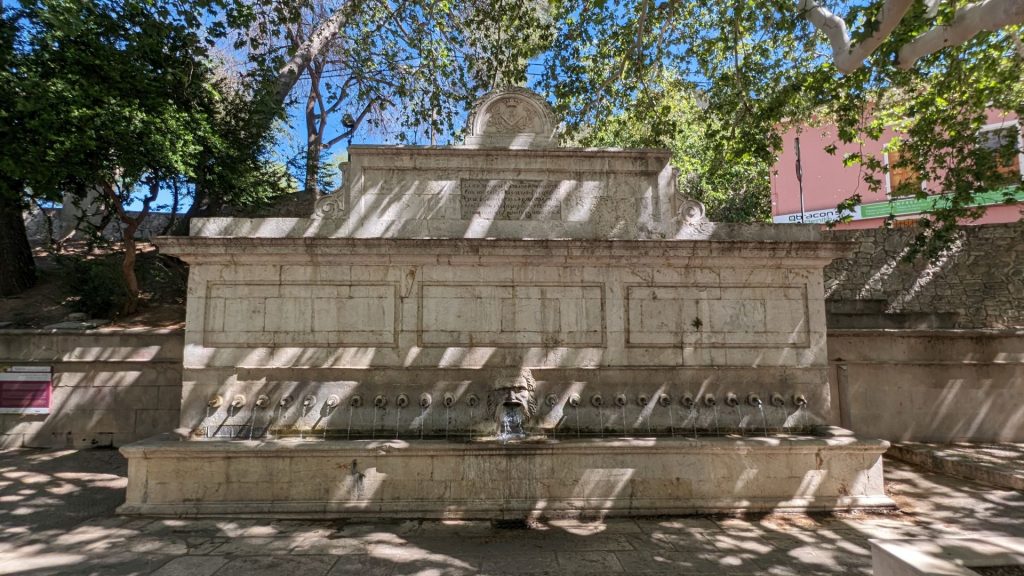
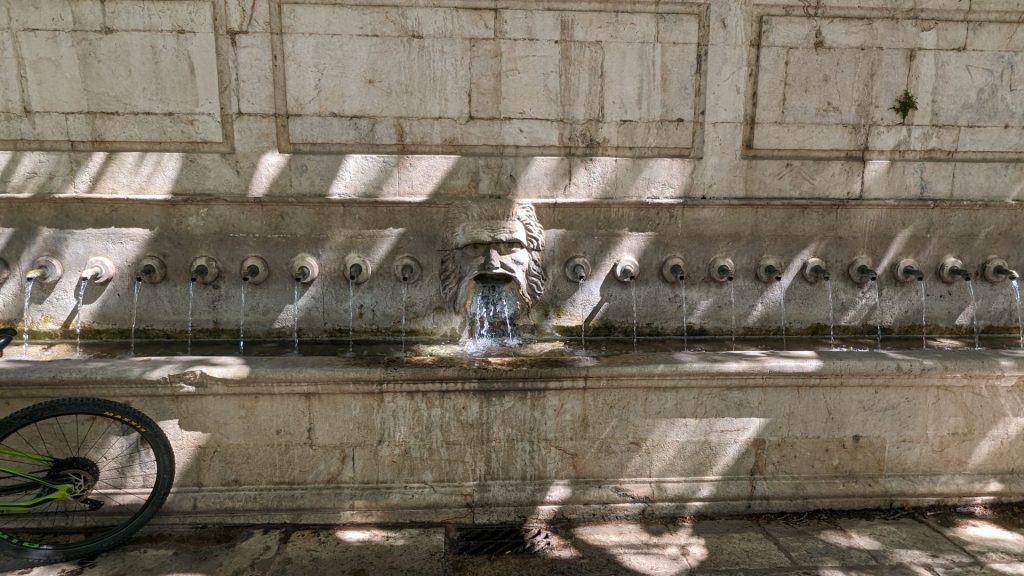
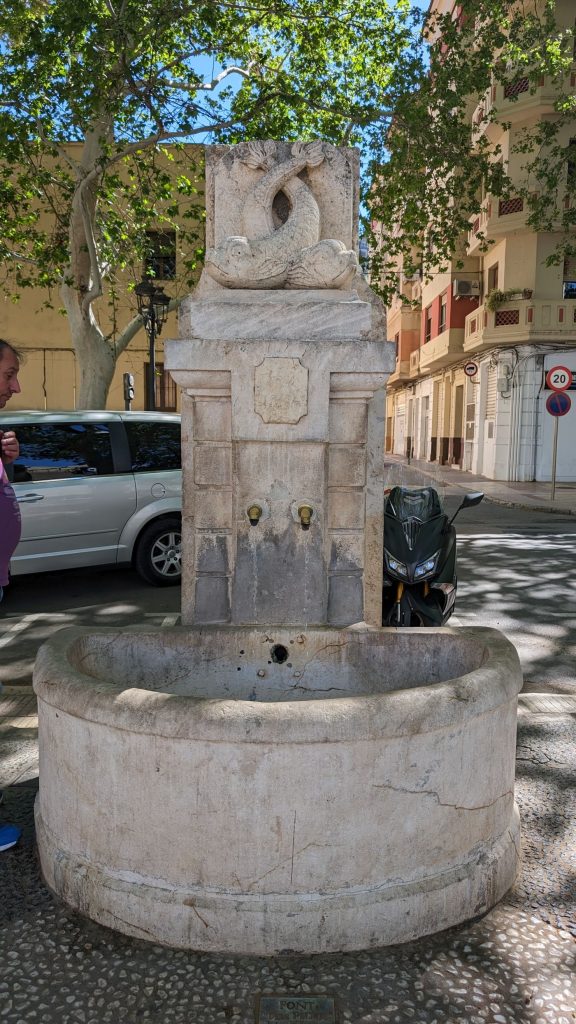
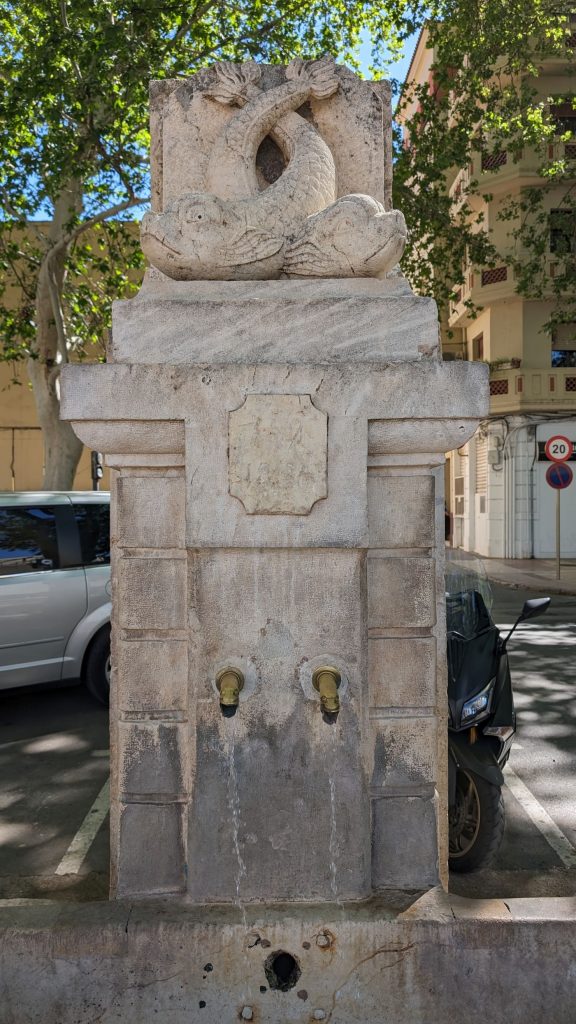
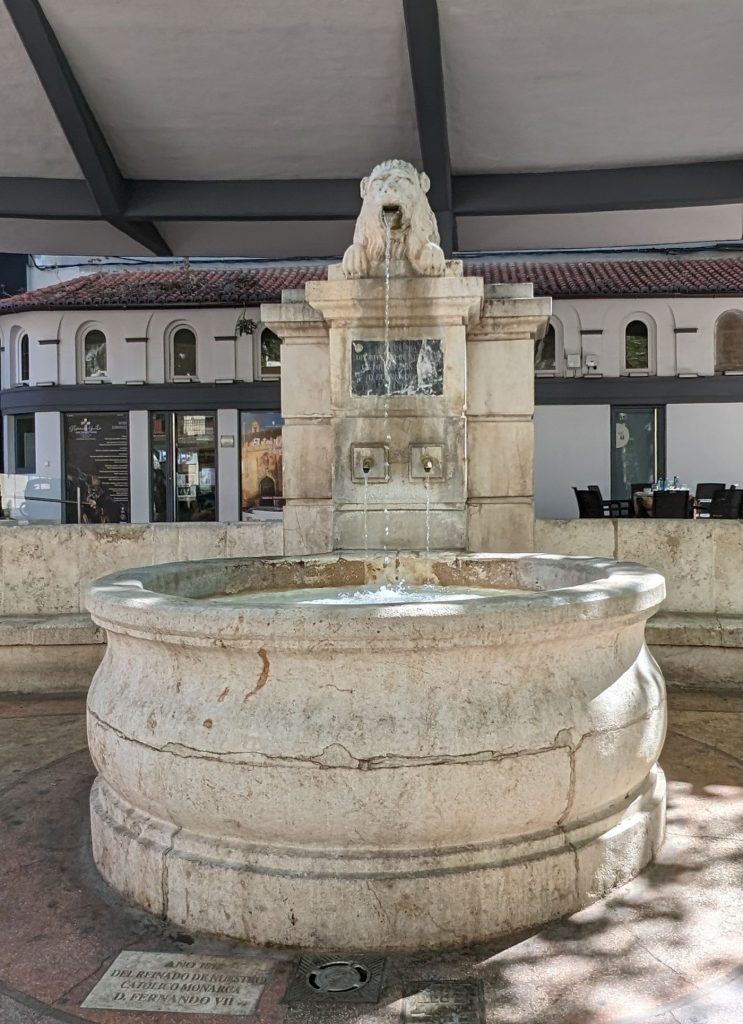
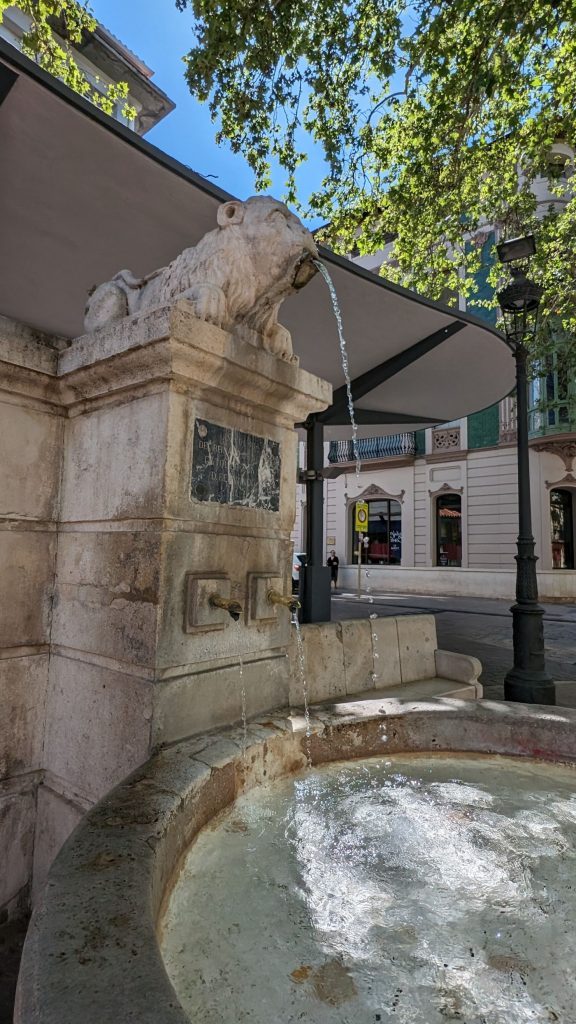
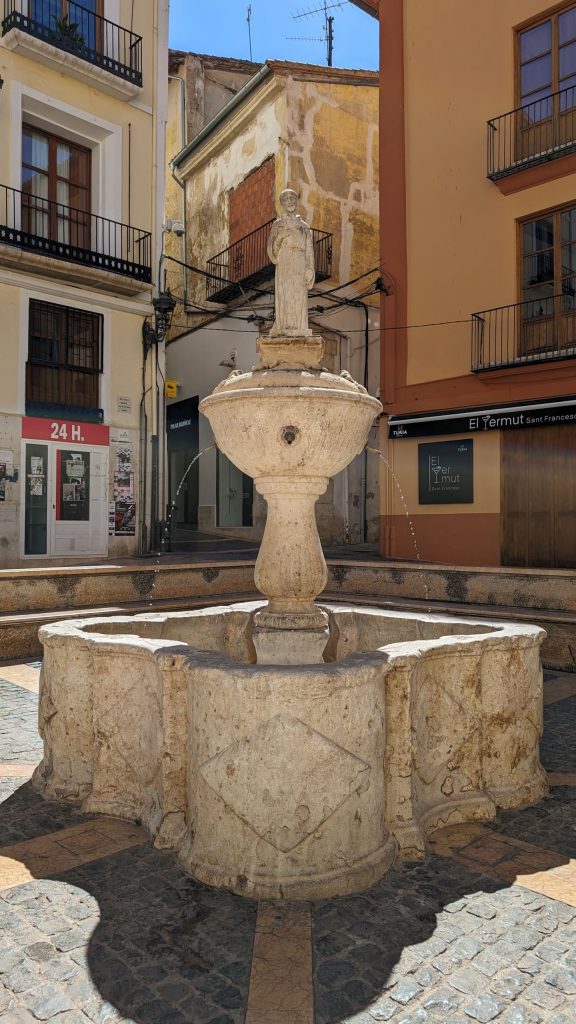
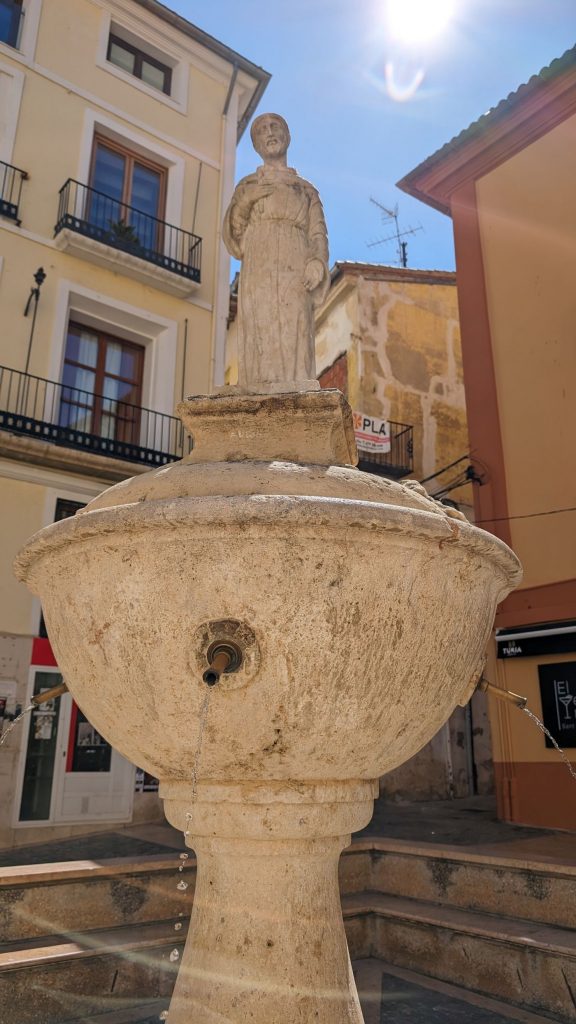
In a bit over an hour (by train), we were back in Valencia.
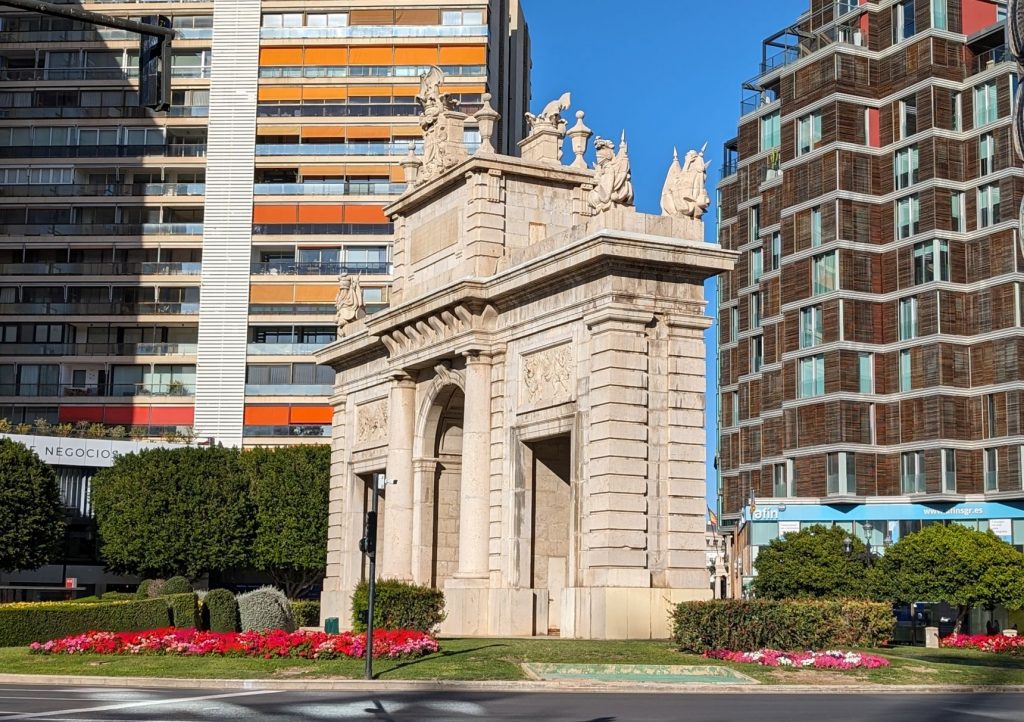
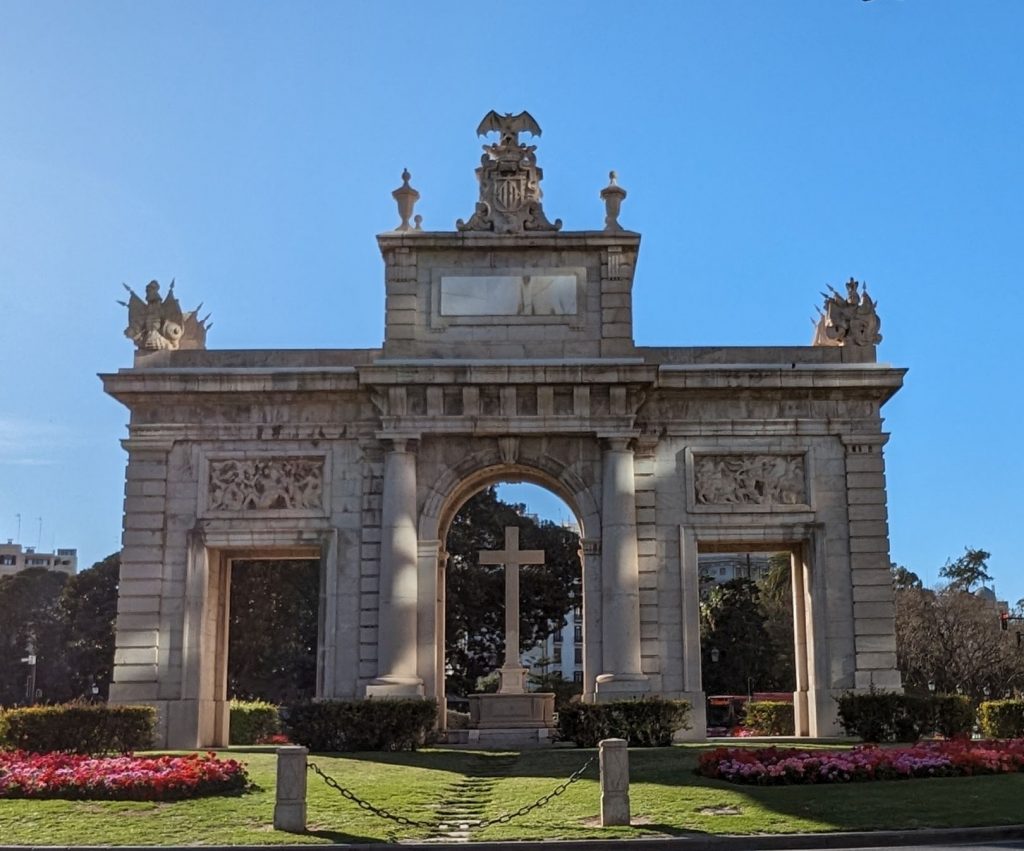
Two bus rides and a 30-minute walk later and we were back at Seahike. This is a picture of Seahike at the dock and the restaurant with the lovely patio we see from Seahike’s bow.
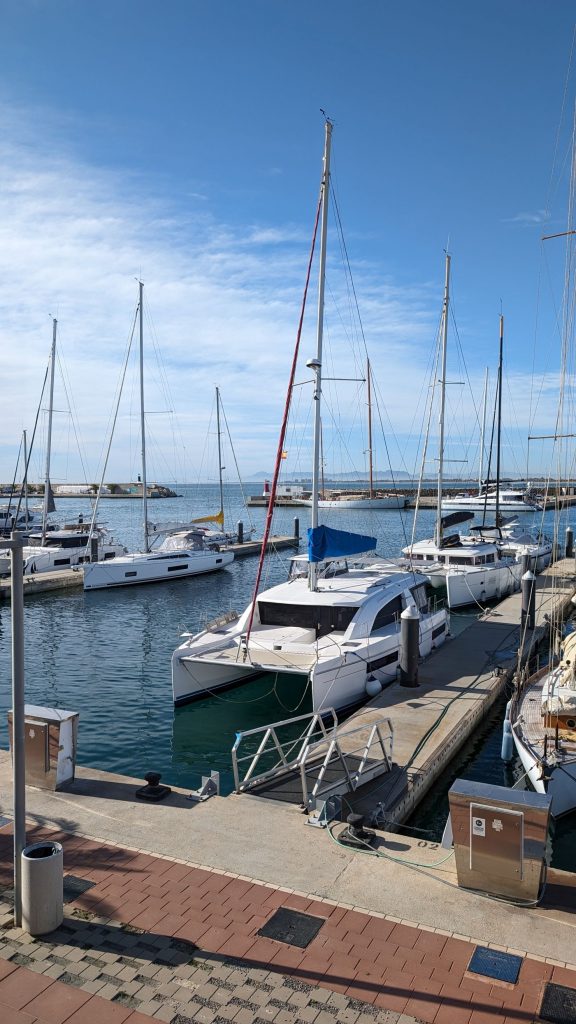
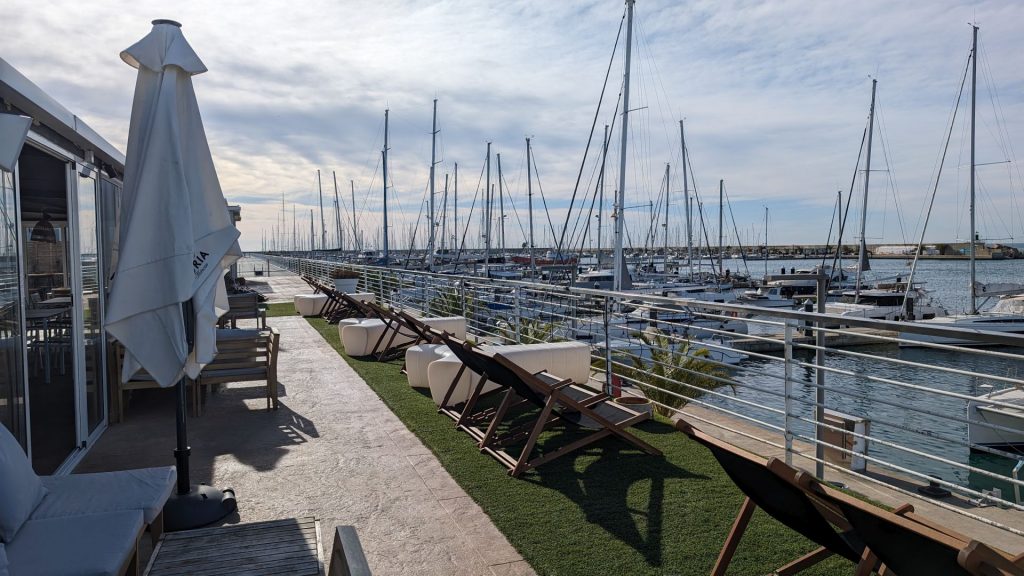
And now, we return to the saga of “The Artwork That Would Not Be Mailed.”
Okay, this time I was almost positively optimistically certain that I could mail it. I found a store that just sells packing stuff! Boxes, padding, tape, etc. Once again, I put my trusty box under my arm and hiked to the box store. A young woman was standing outside the door. I think she was just taking a moment to enjoy the outdoors. We went into the store and I told her what I needed. She didn’t speak English and I speak about 12 words of Spanish. We used one of my favorite apps, Google Translate, to converse.
She found a box and I asked her if I could pack my other box in her store. She said no at first, but then I told her I had hoped to go from there to the Post Office. For some reason, she agreed. She told me how much the bubble wrap would cost. It was more than I wanted to pay. Then she found a smaller roll and charged me half. I wasn’t going to argue. She was being very kind and I was kind of desperate at this point.
We knelt down on the floor and wrapped my smaller box with the entire partial roll of bubble wrap. When we tried to put it in the bigger box, it was now too long. So we each cut off the ends of the bubble wrap and successfully stuffed it in the bigger box. Then she taped it shut for me.
Boy, am I ever glad she was working that day!
Now I took my box inside a box to the Post Office, about a 20-minute walk away. There I was again helped by a very kind and patient woman. She asked me if the size of the box was necessary because it would be expensive. I told her yes. And, yes, it was a bit pricey, but cheaper than mailing it from the US. It took a good 10 minutes to do all of the stuff we needed to do to get it ready to mail. But at least . . . .
It was in the mail!
Now I am just crossing my fingers that – after all of that – it arrives unbroken. I know it has reached Corfu, but our friends are traveling so they haven’t picked it up yet.
I walked around a bit then through the Ruzafa neighborhood on the way to meet Michael. I should note that I don’t usually pay a lot of attention to architecture, but it is impossible to do otherwise in Valencia. It is so beautiful!
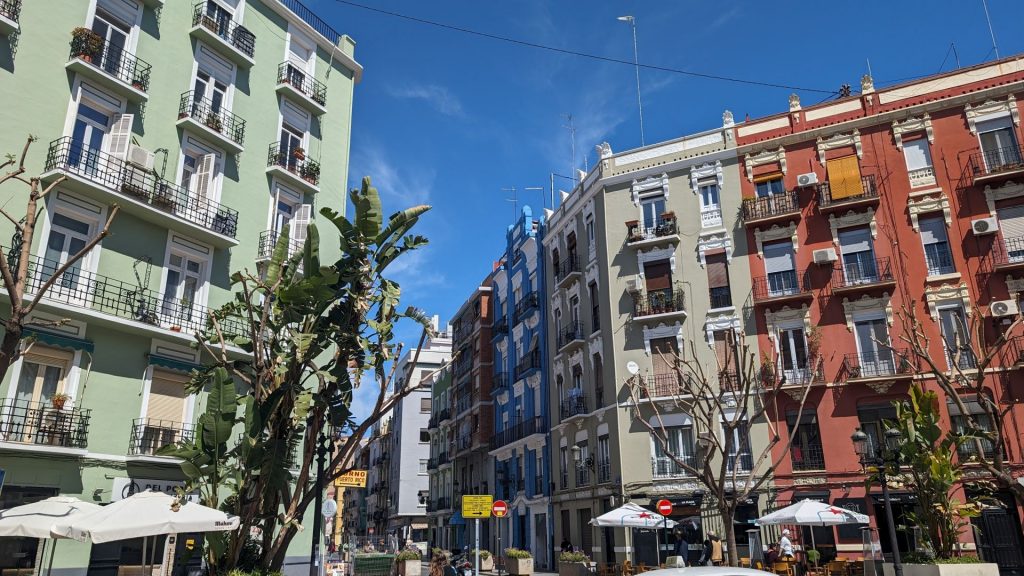
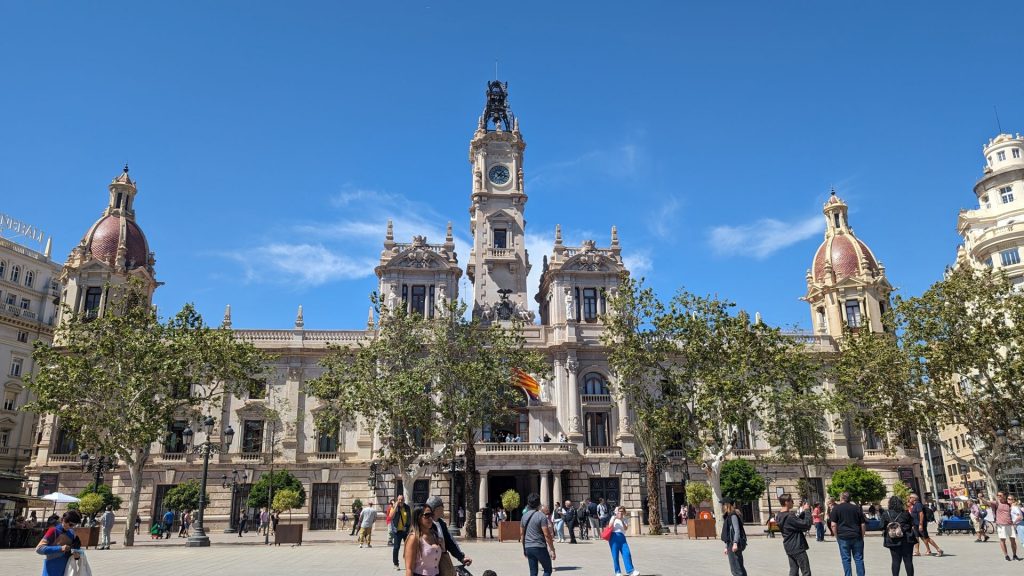
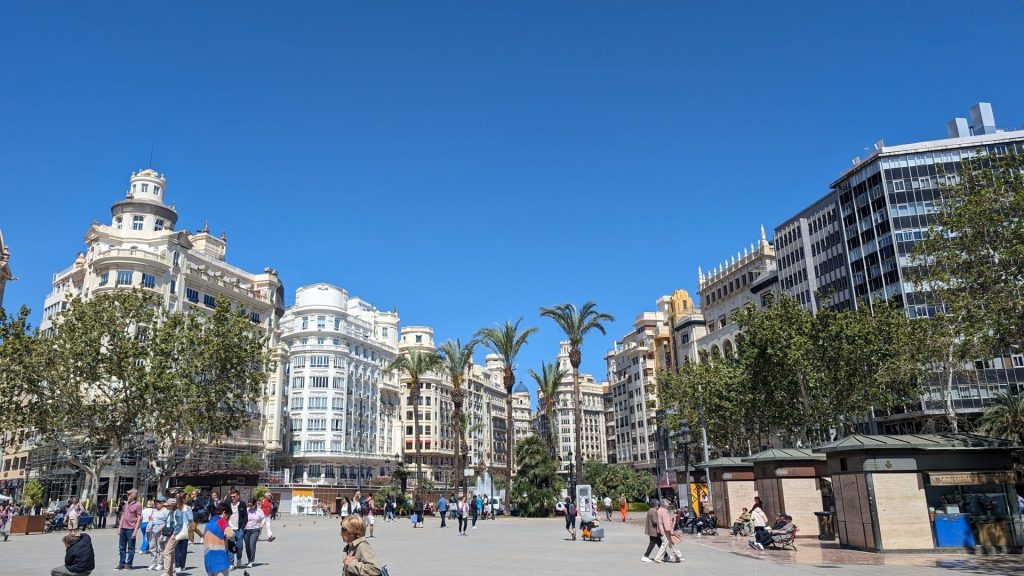
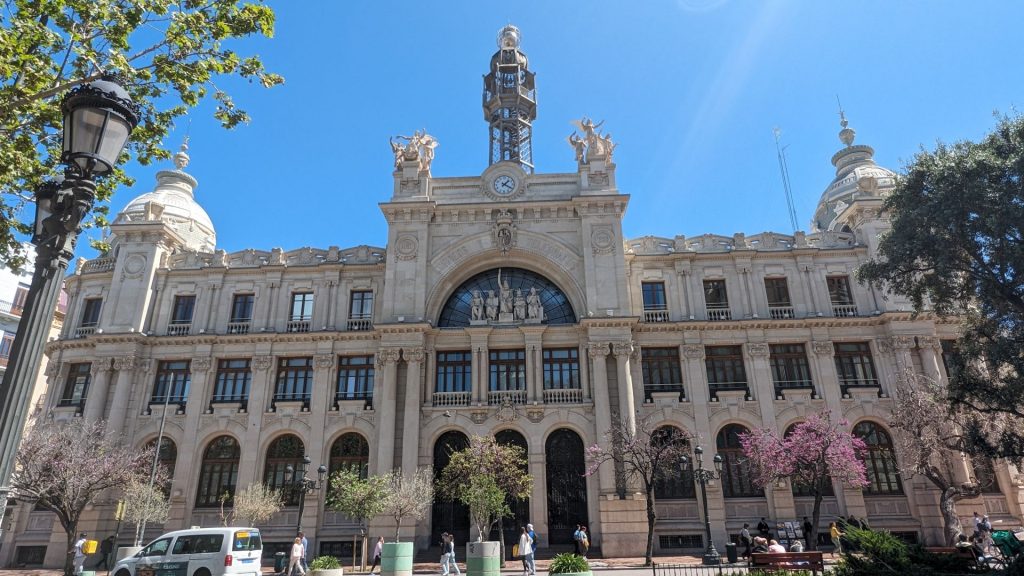
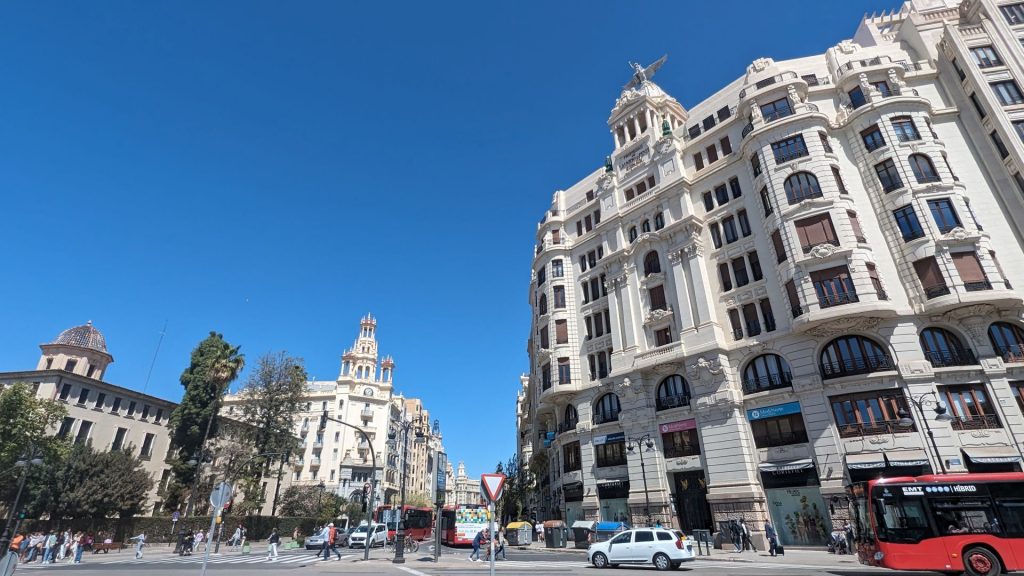
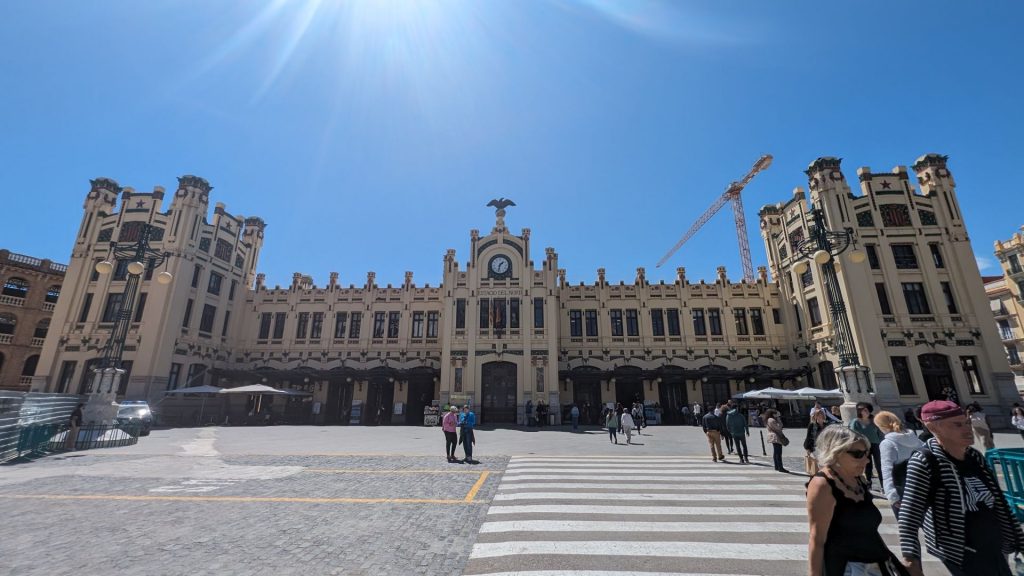
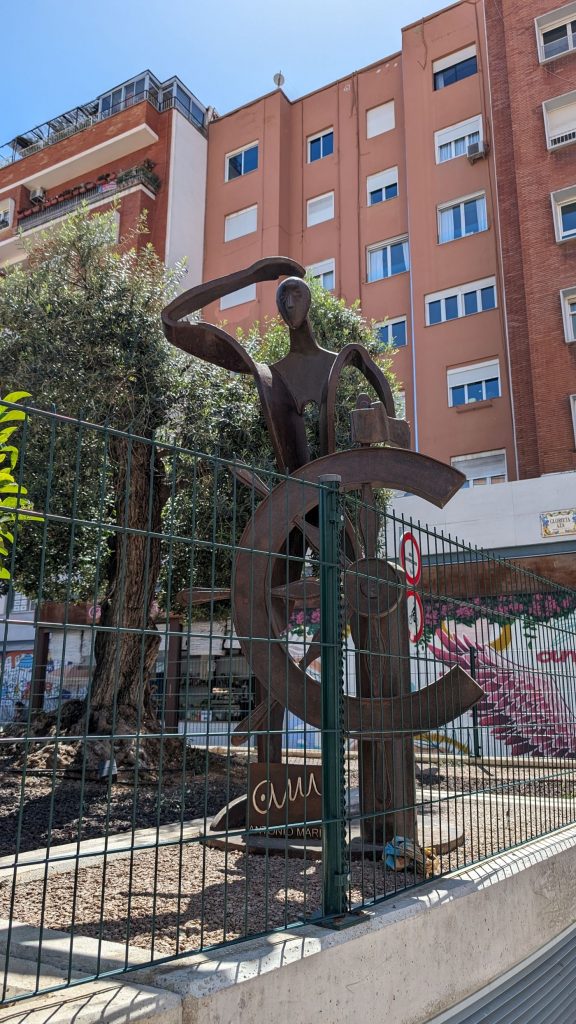
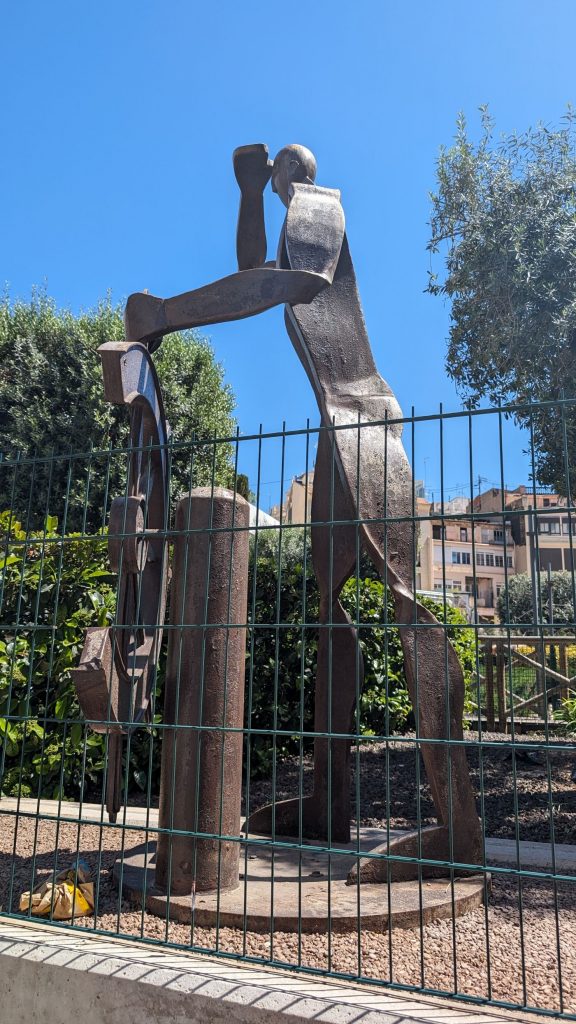
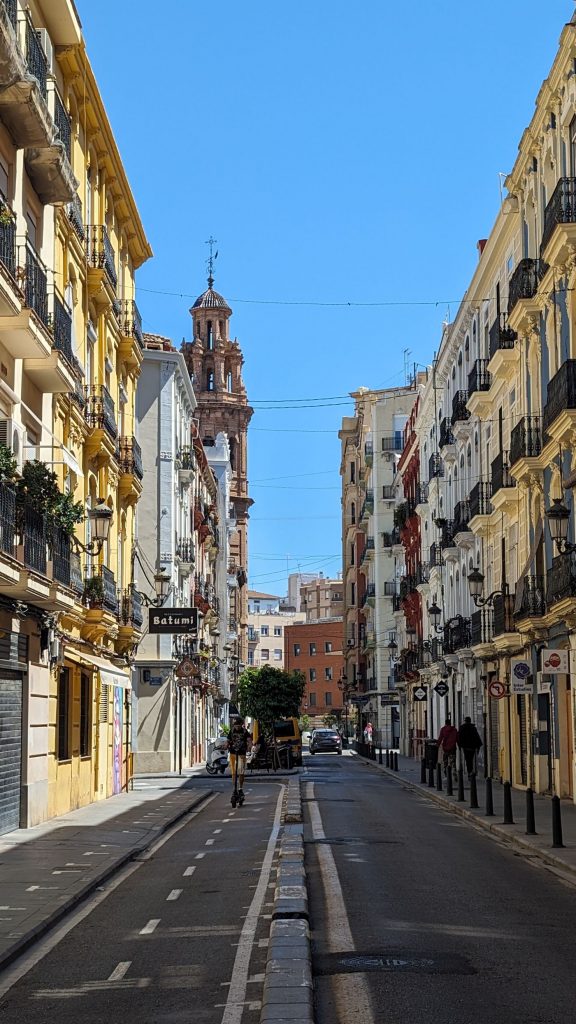
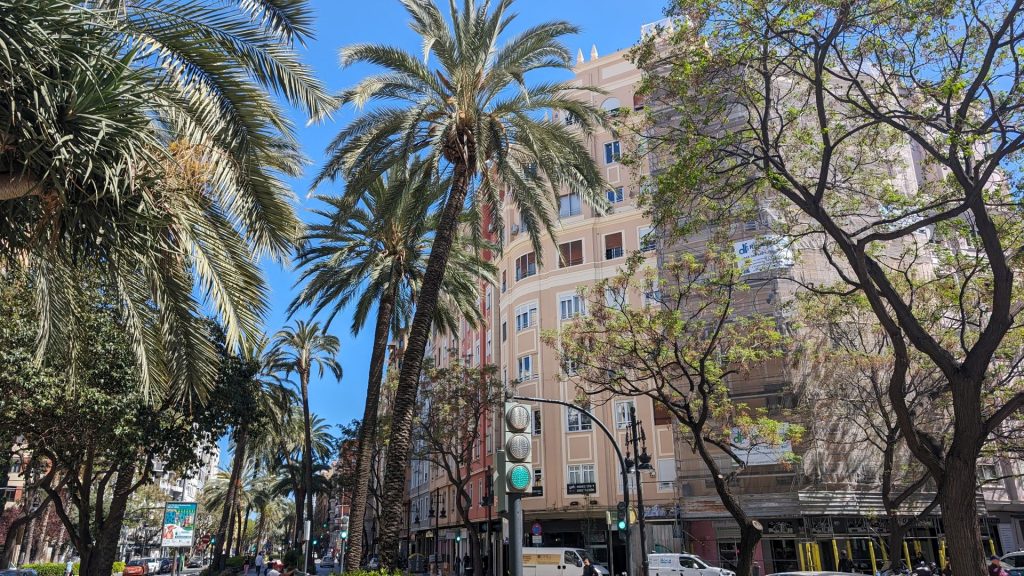
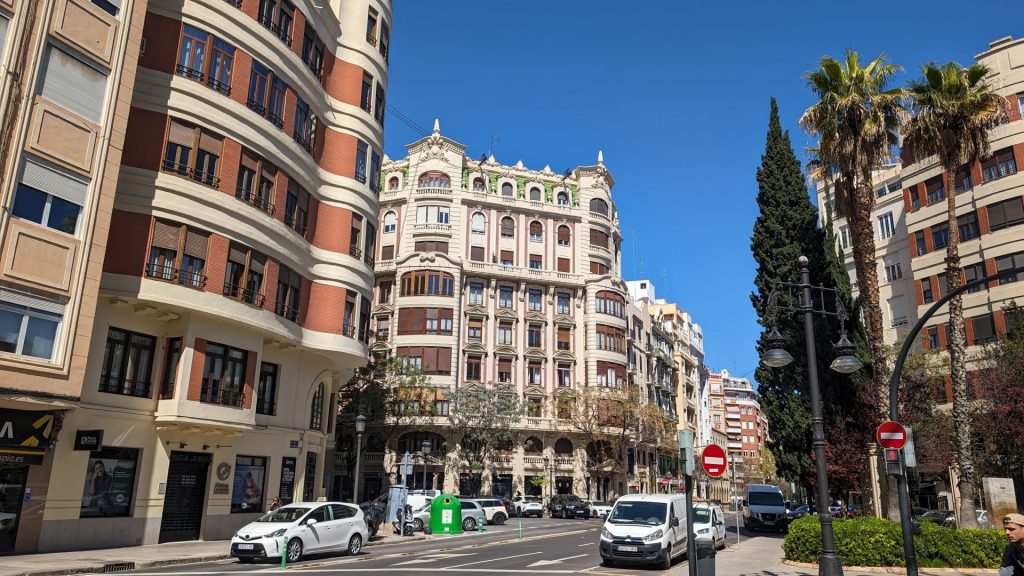
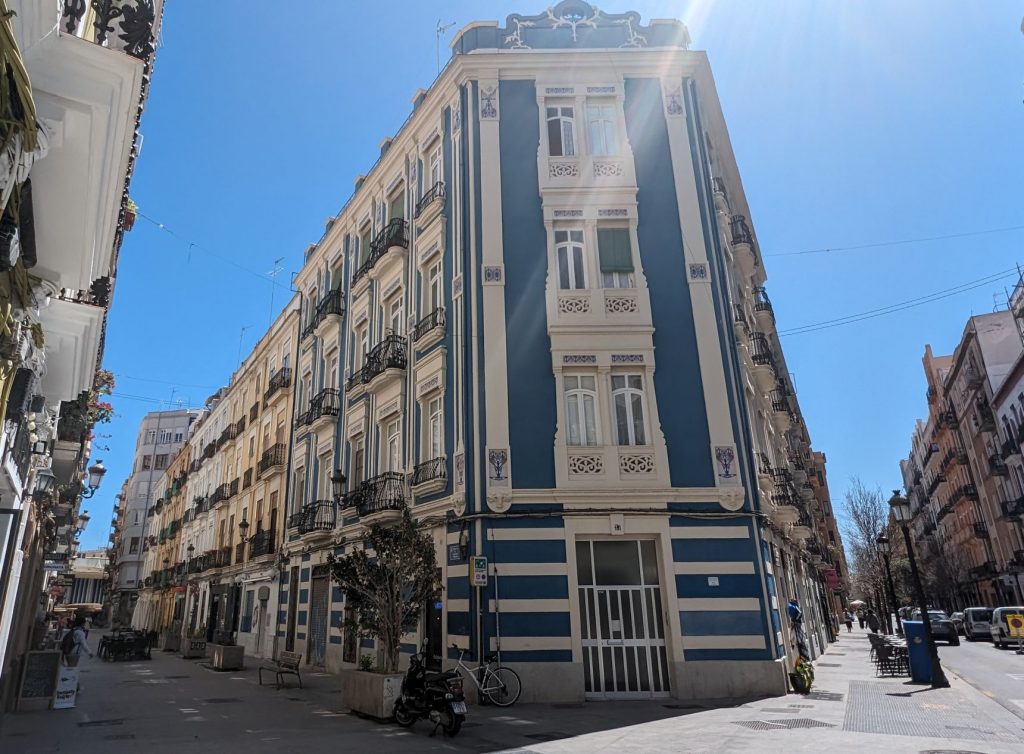
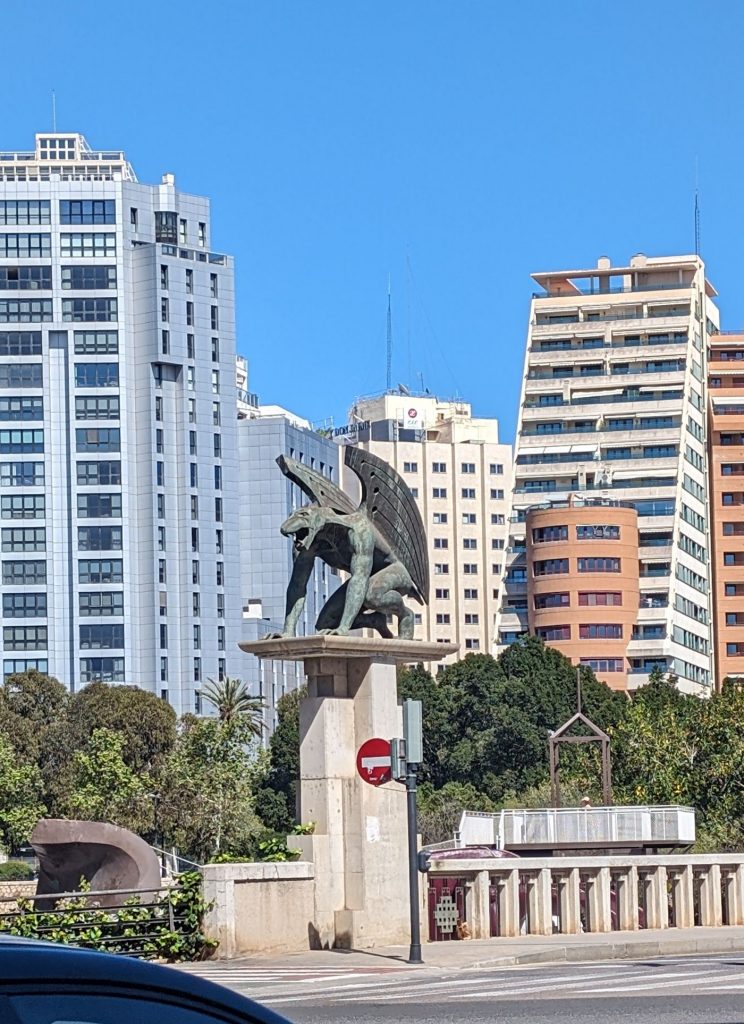
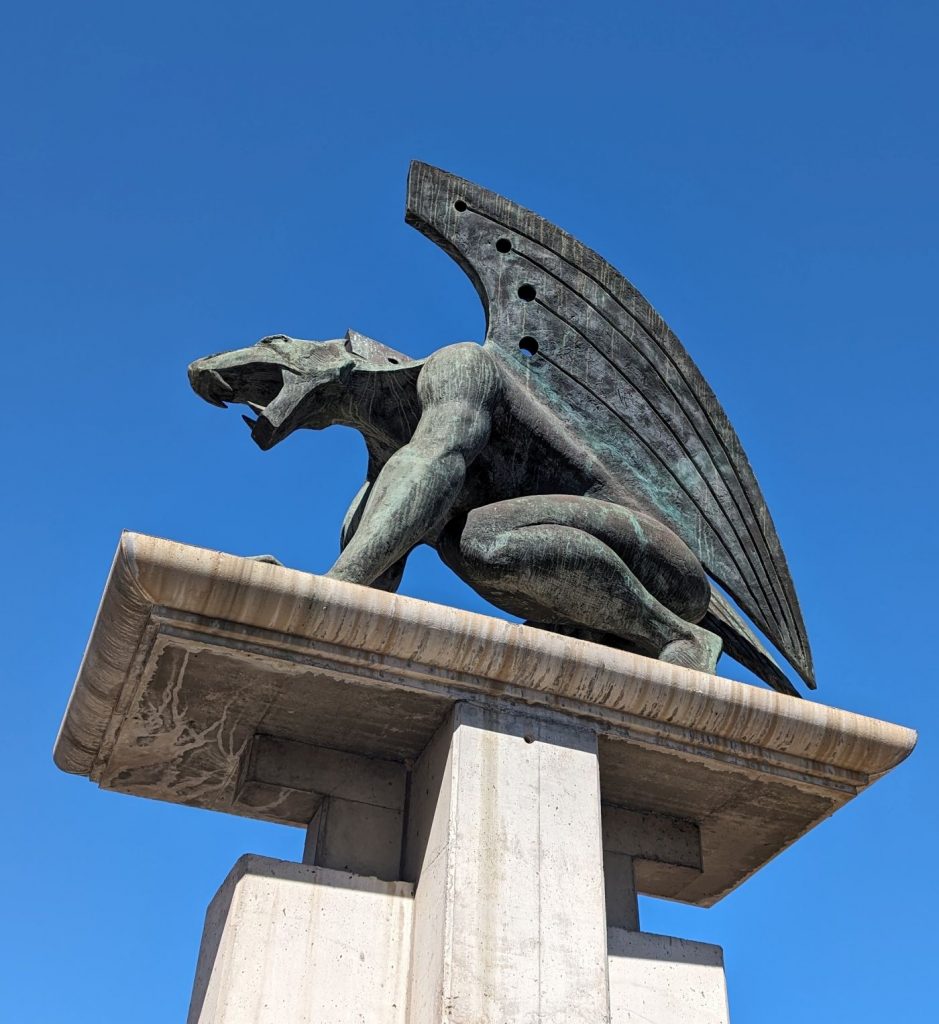
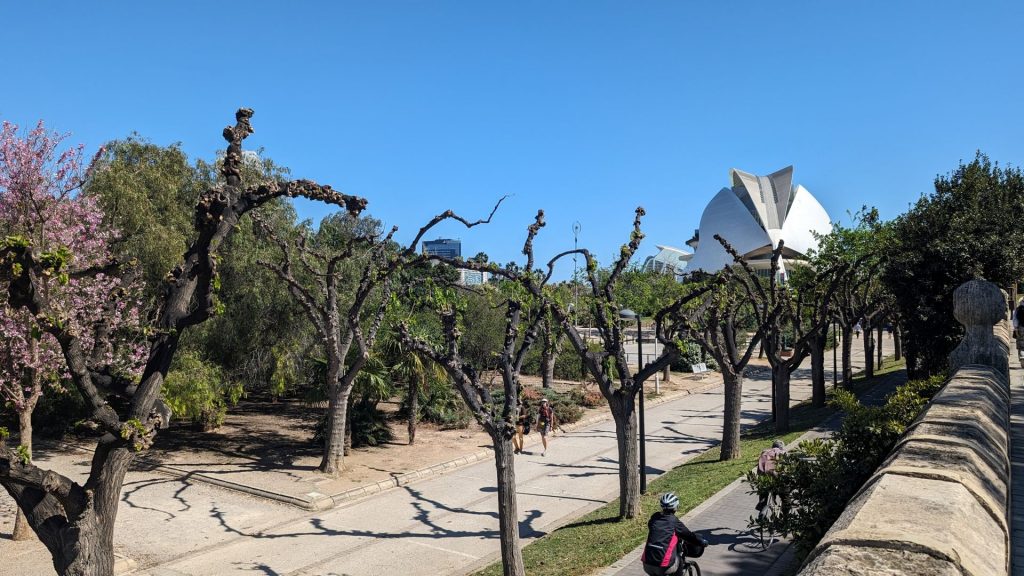
Michael and I had planned to meet at the Science Museum at about 4:30 p.m. then go to the Omni Theater at 6:00 p.m. We went to the Science Museum but we skipped the Omni Theater. We’d hoped to meet our friends Heather and John for drinks and then go to the show, but that didn’t work for them. They suggested we go to dinner at 8:00 p.m. It sounded like a good idea at the time, but while we were at the museum we realized it would be too late for us. Hey, don’t judge me because I go to bed between 9:00 and 10:00 p.m. 😉
Anyhoo, we went to the museum then – when we copped out on the Omni theater – asked Heather and John if they wanted to join us at El Bar (we really liked it, remember, and it was very close to the museum) for dinner. So that’s what we did.
But what I want to share with you are the pictures of the exterior of the aquarium, science museum, omni theater and . . . I don’t know what the other one is, but it has to do with arts. (This is, after all, the arts and science section of Valencia. How cool is a city that has that!)
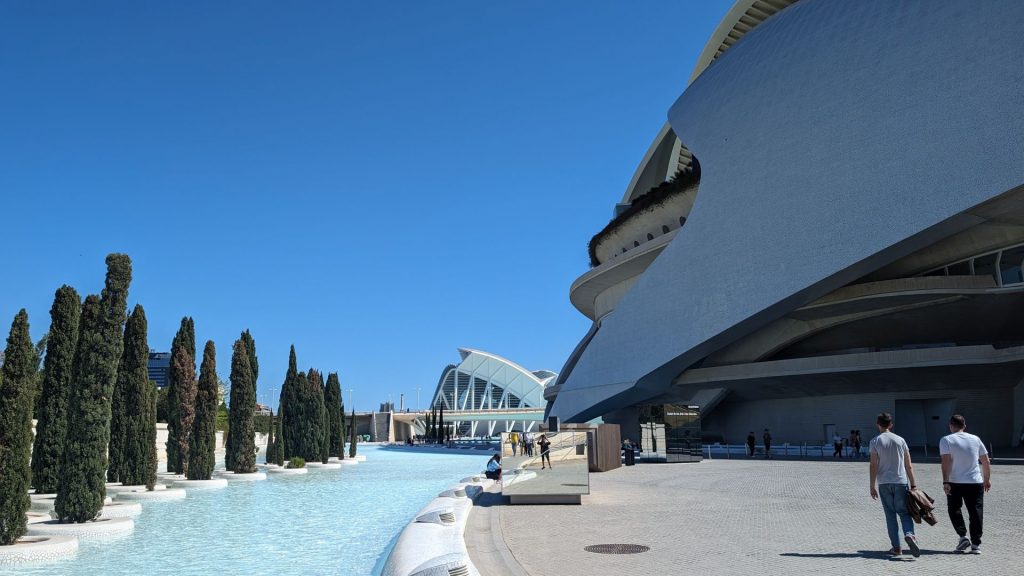
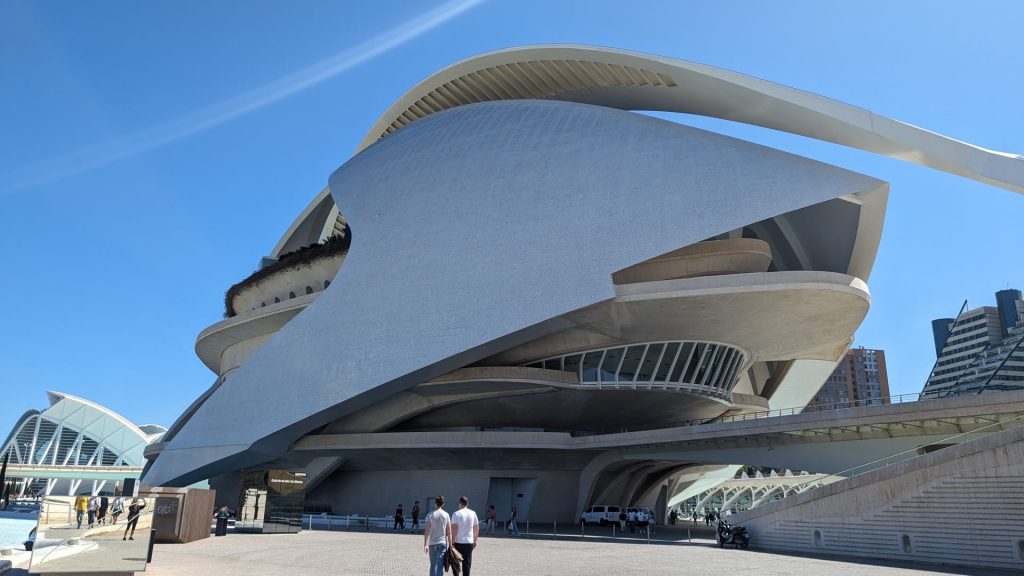
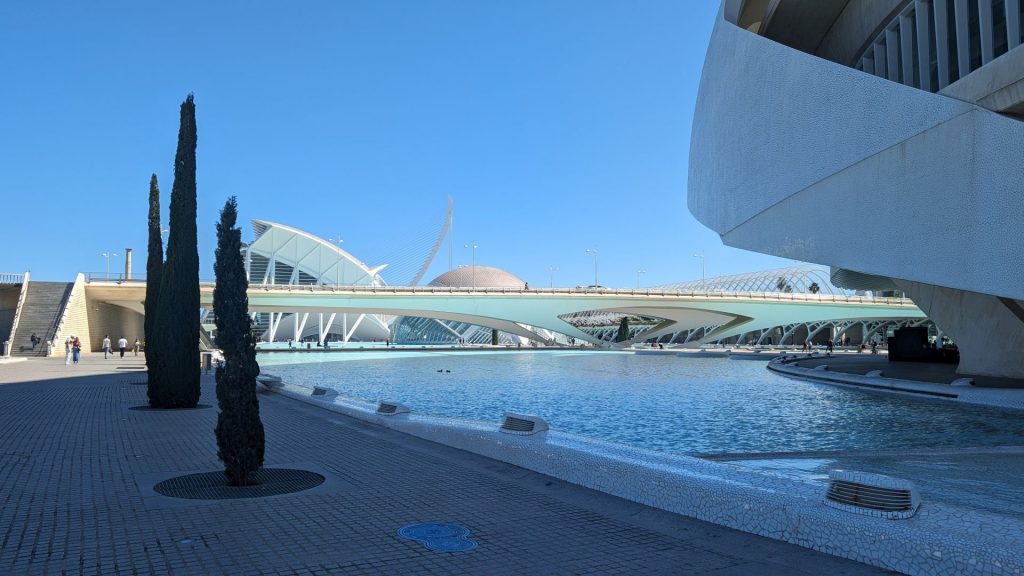
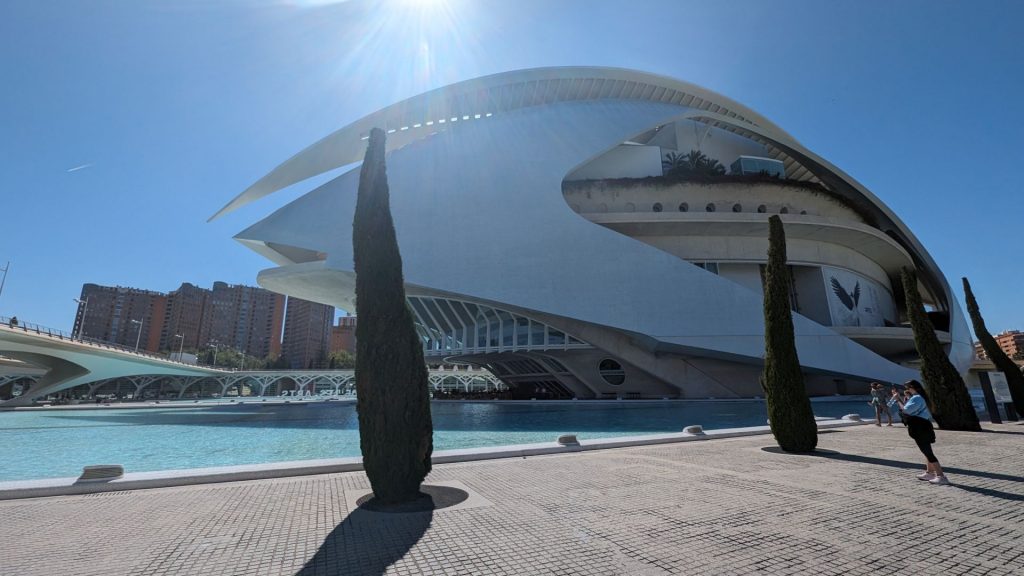
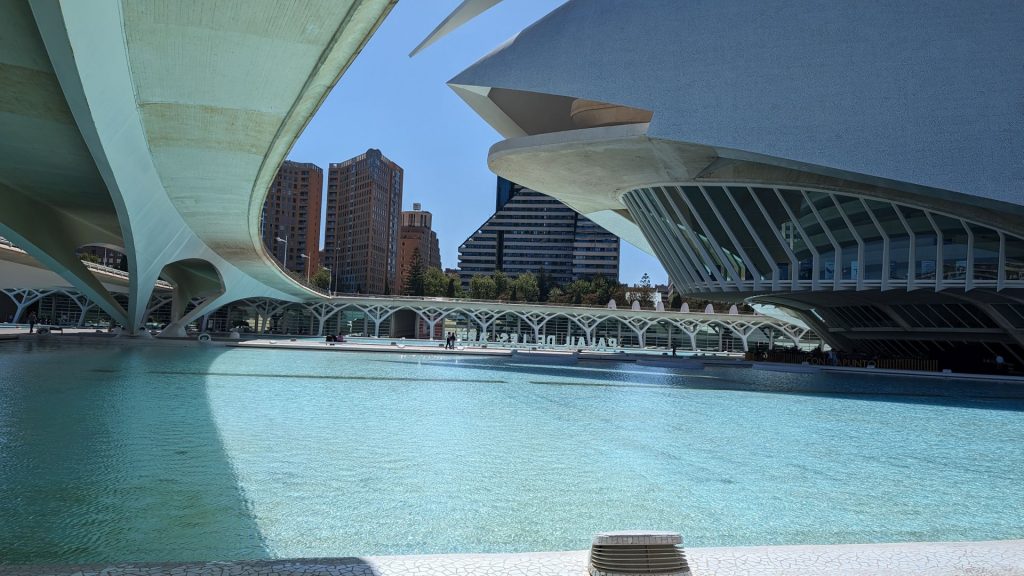
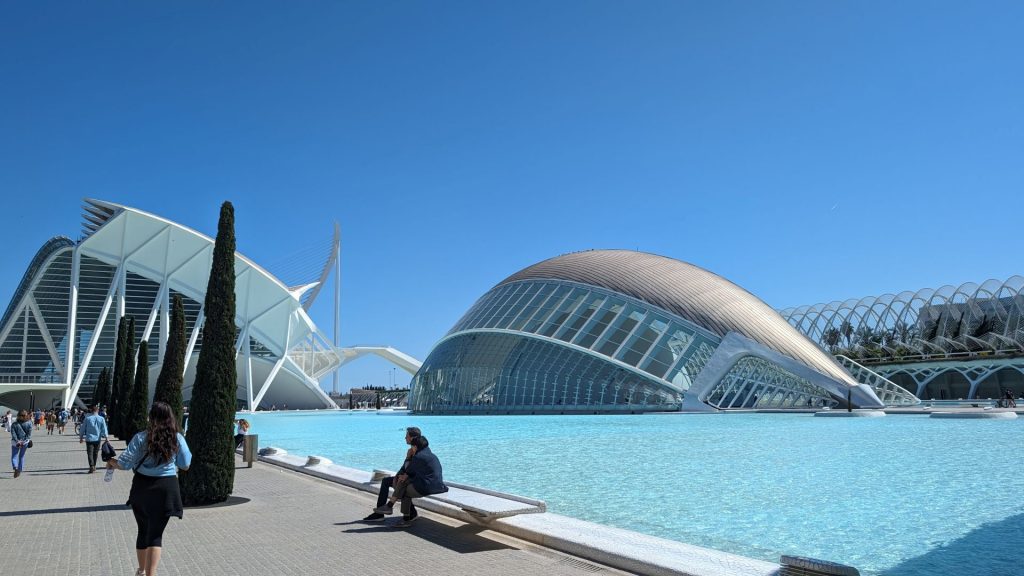
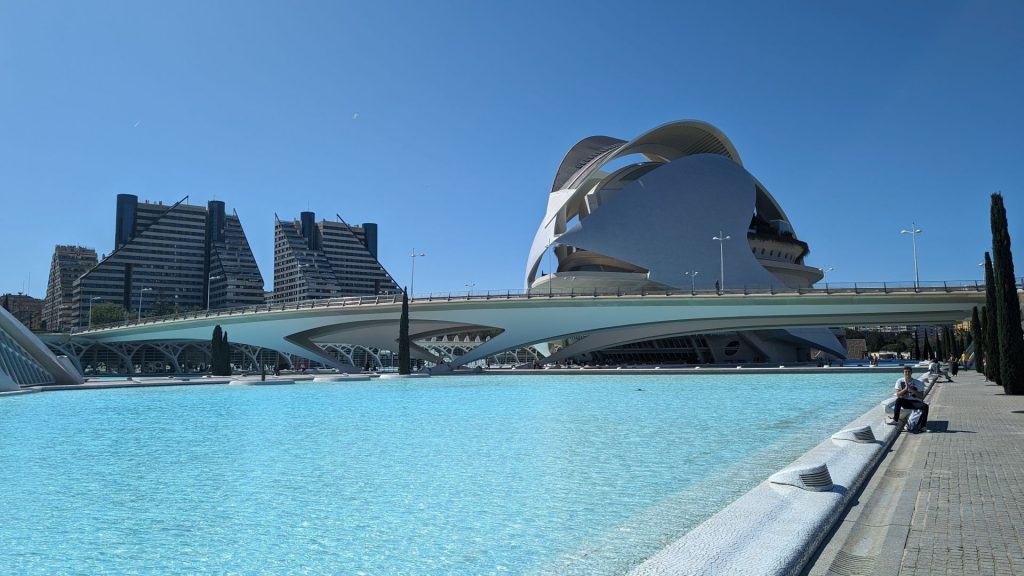
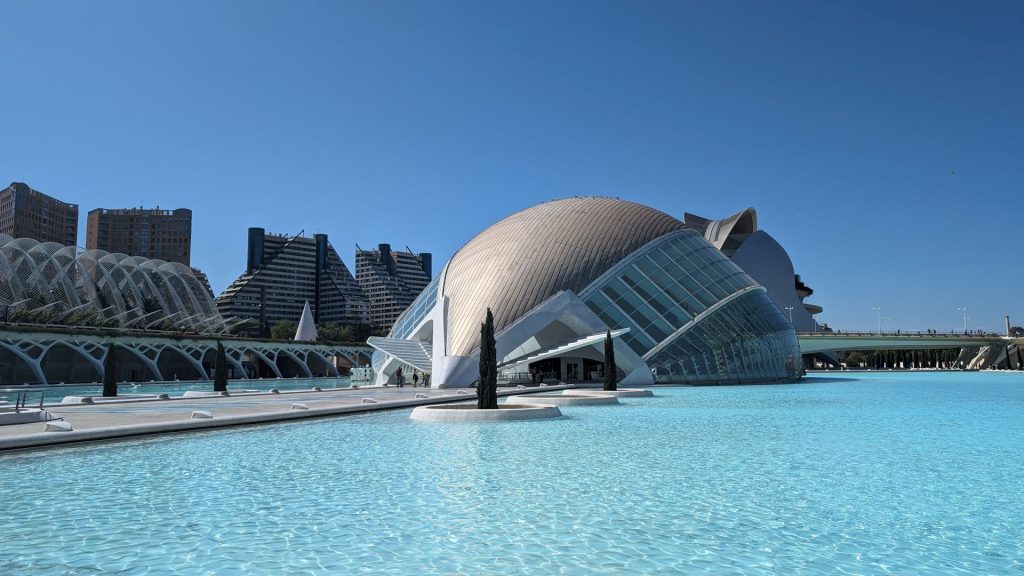
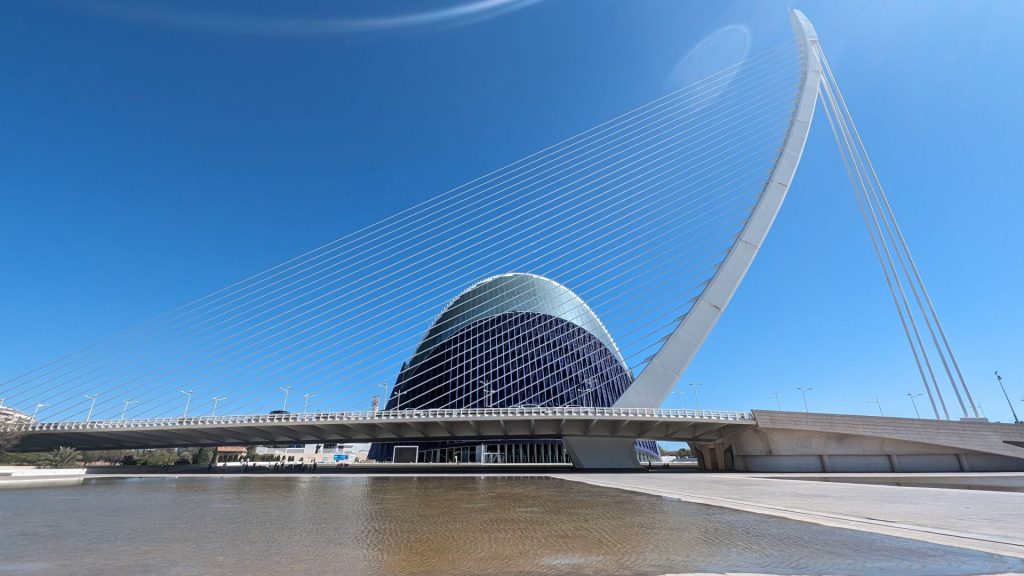
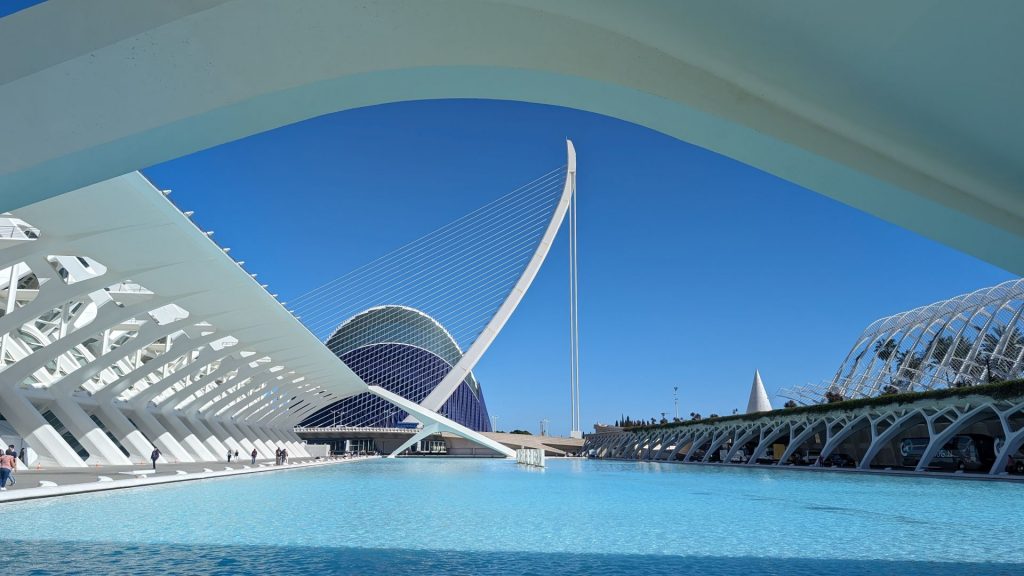
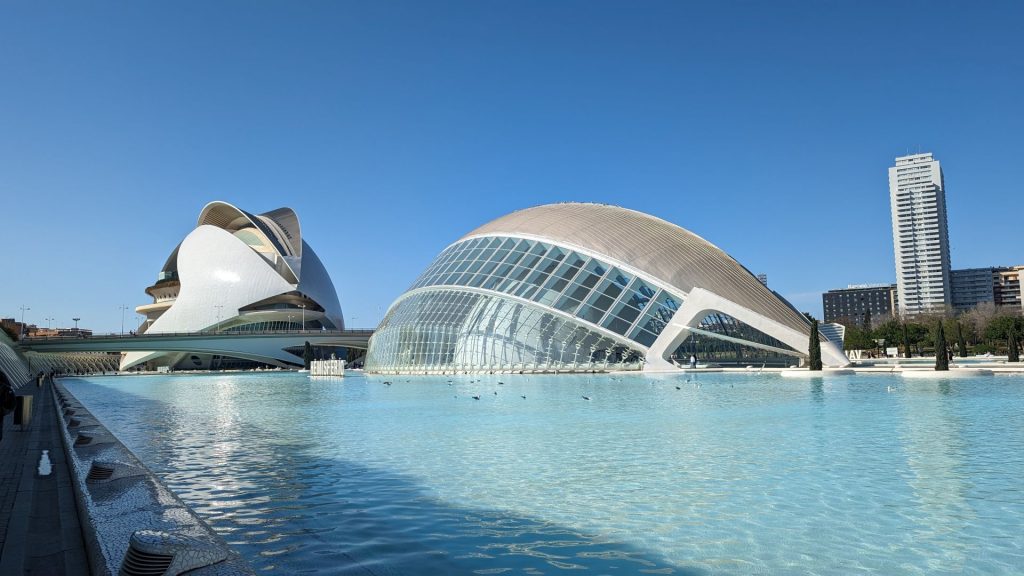
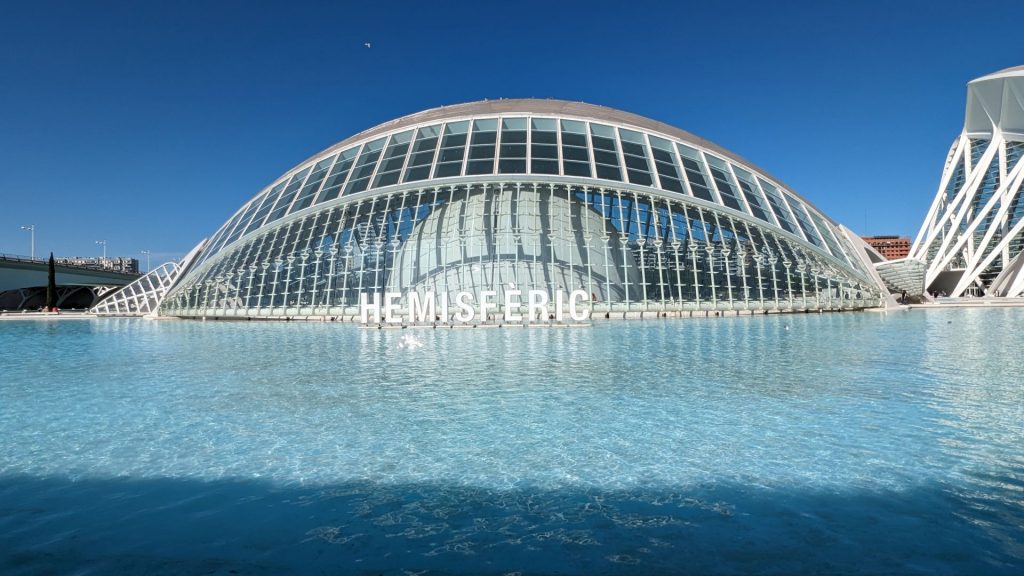
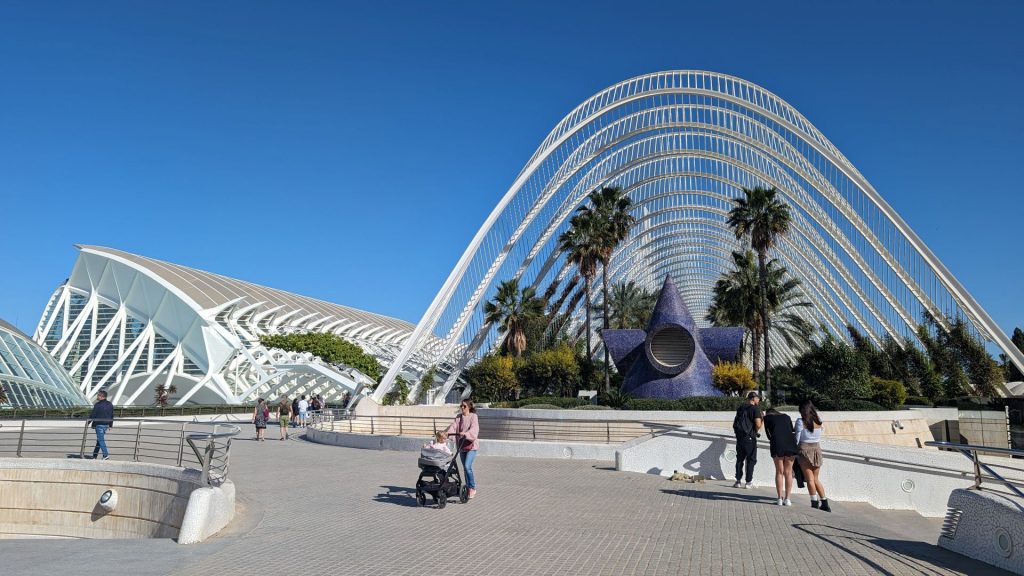
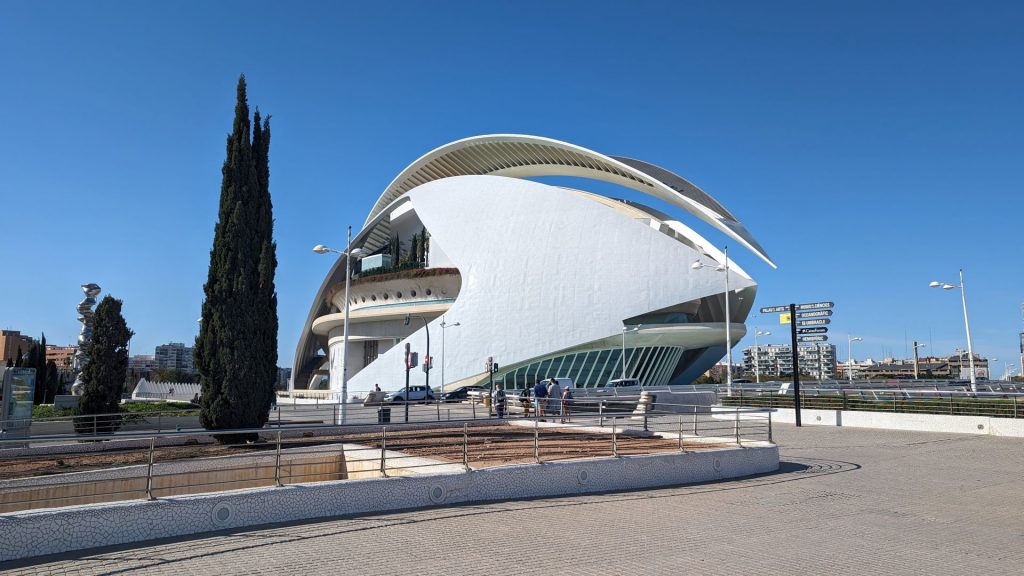
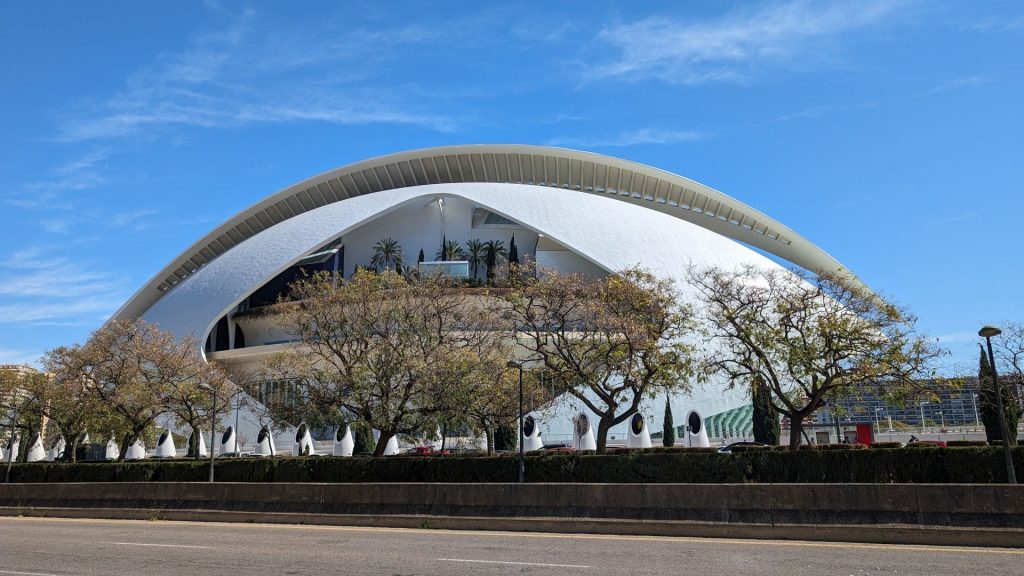
And there we were, back at El Bar. We were delighted to see Heather and John again!
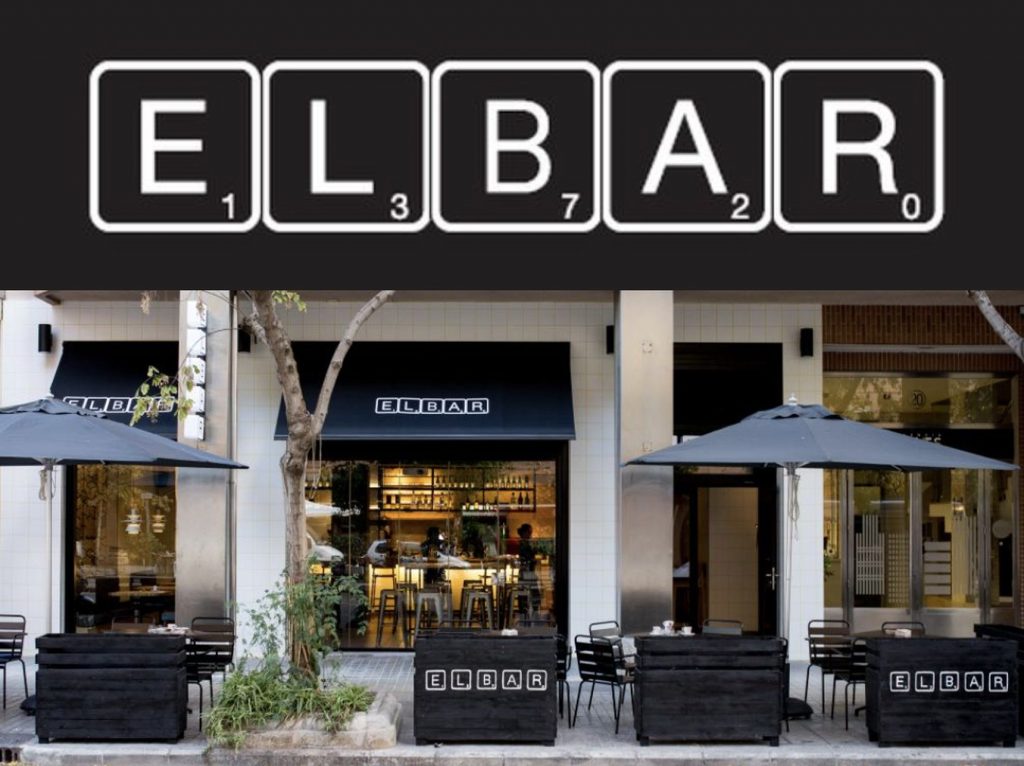
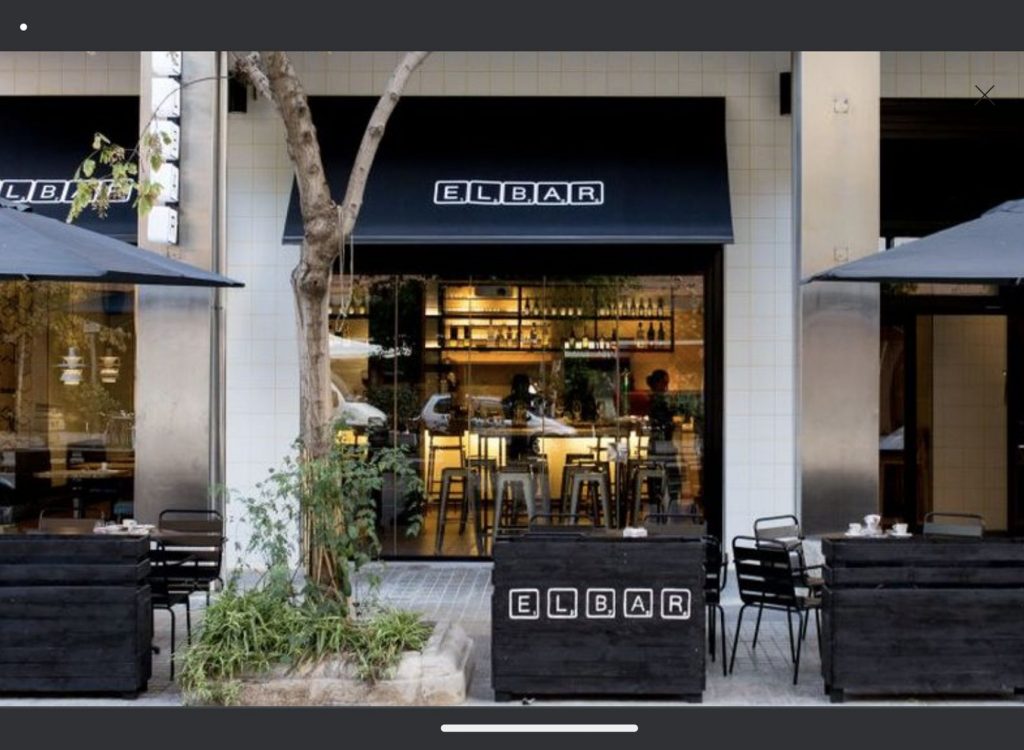
We ended up staying on Seahike the next day rather than taking the day trip we’d originally planned. I’d been a dork and fallen on my fountain walk in Xàtiva and my knee was aching. I probably could have walked on it, but I decided to play it safe and baby it.
We decided to share some brandy and a cigar our last night in Valencia. We truly enjoyed our time here and in Xàtiva! I still kind of wish we’d been able to go to Ibiza, but sailing is nothing but compromising so you either gotta go with it or go crazy. 🙂
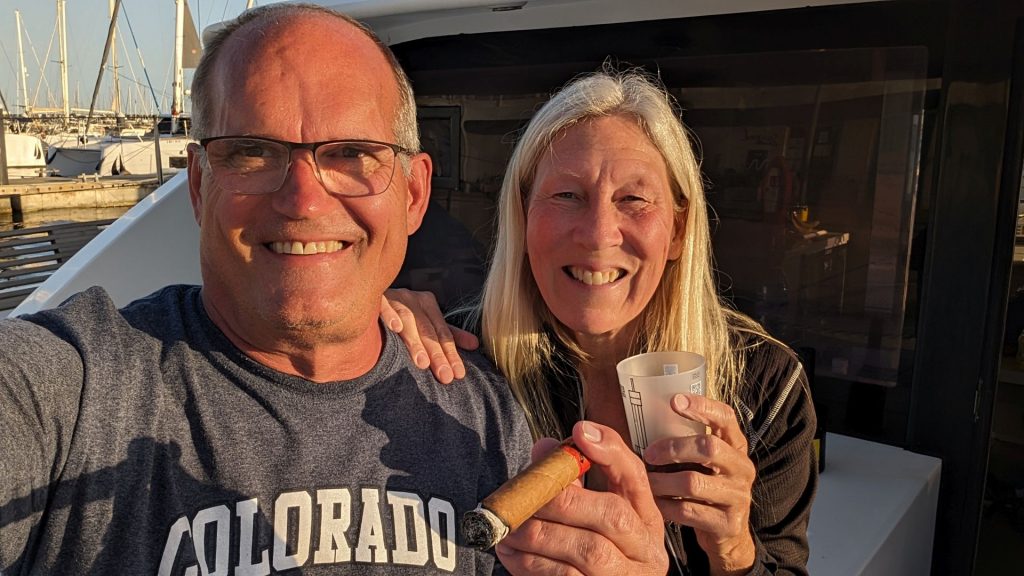
We’ll share our sail along the Spanish coast – on the way to Cartagena – in the next blog.
